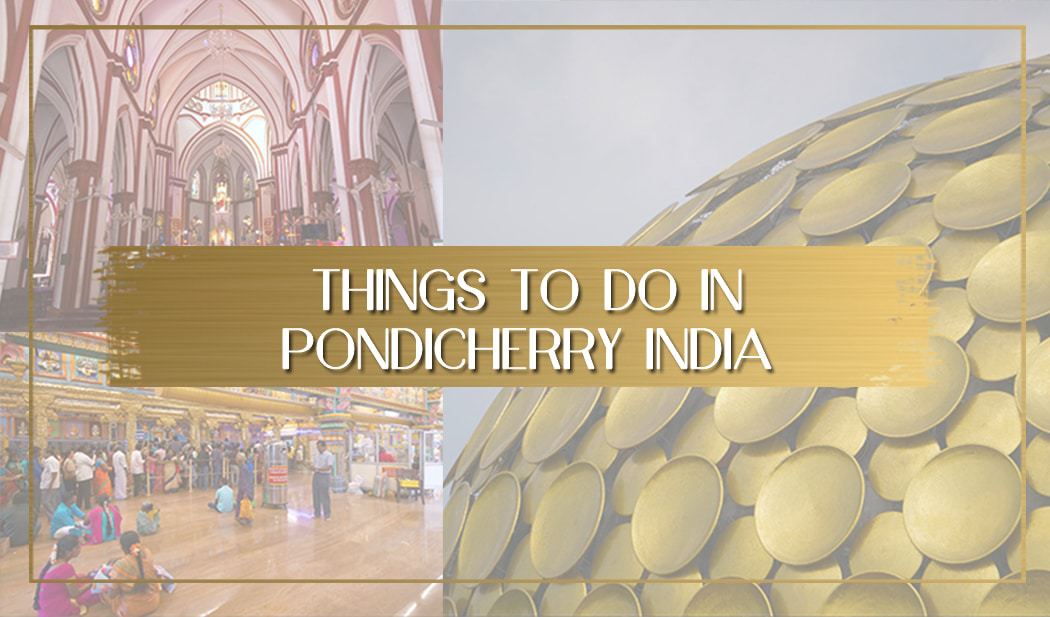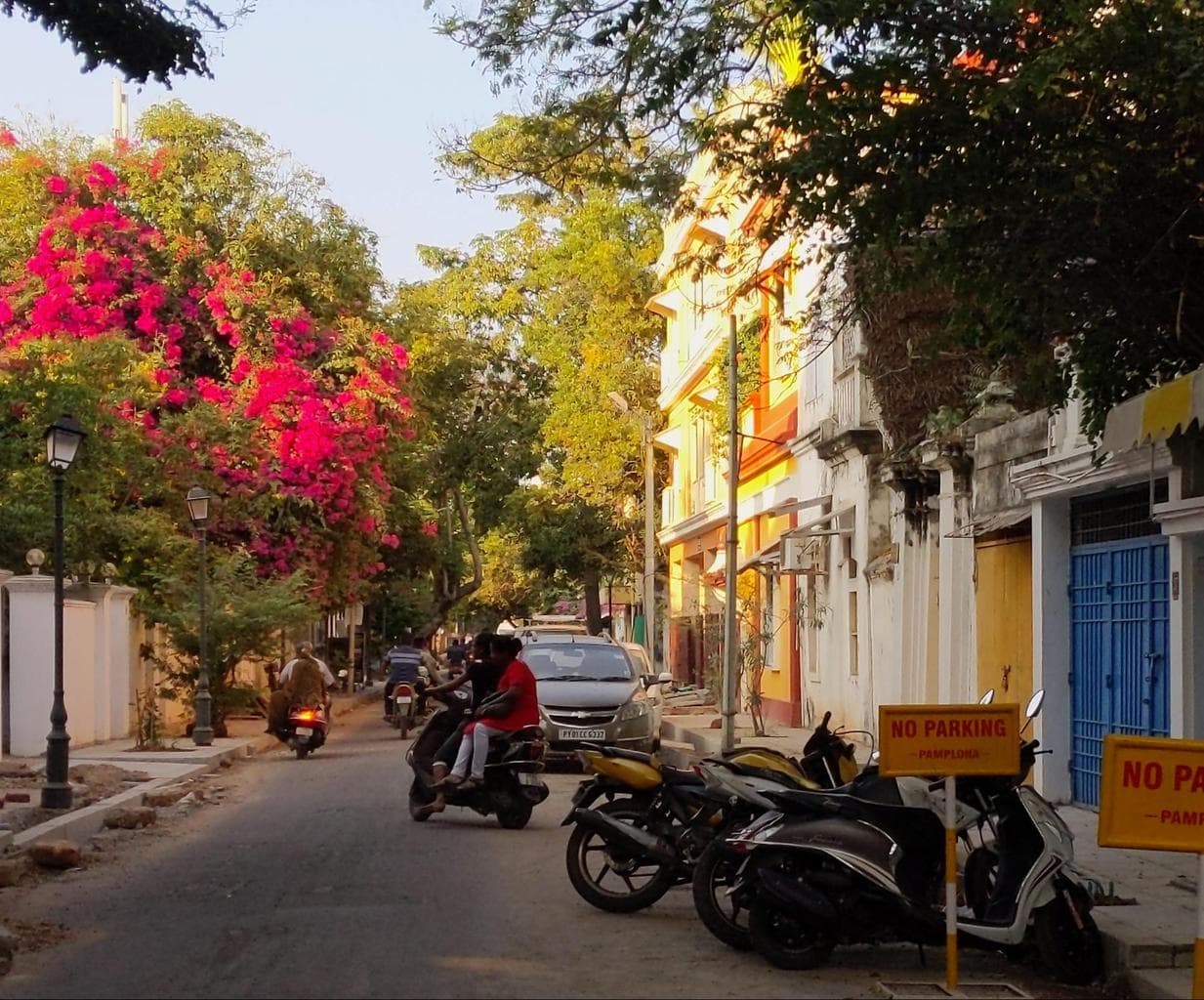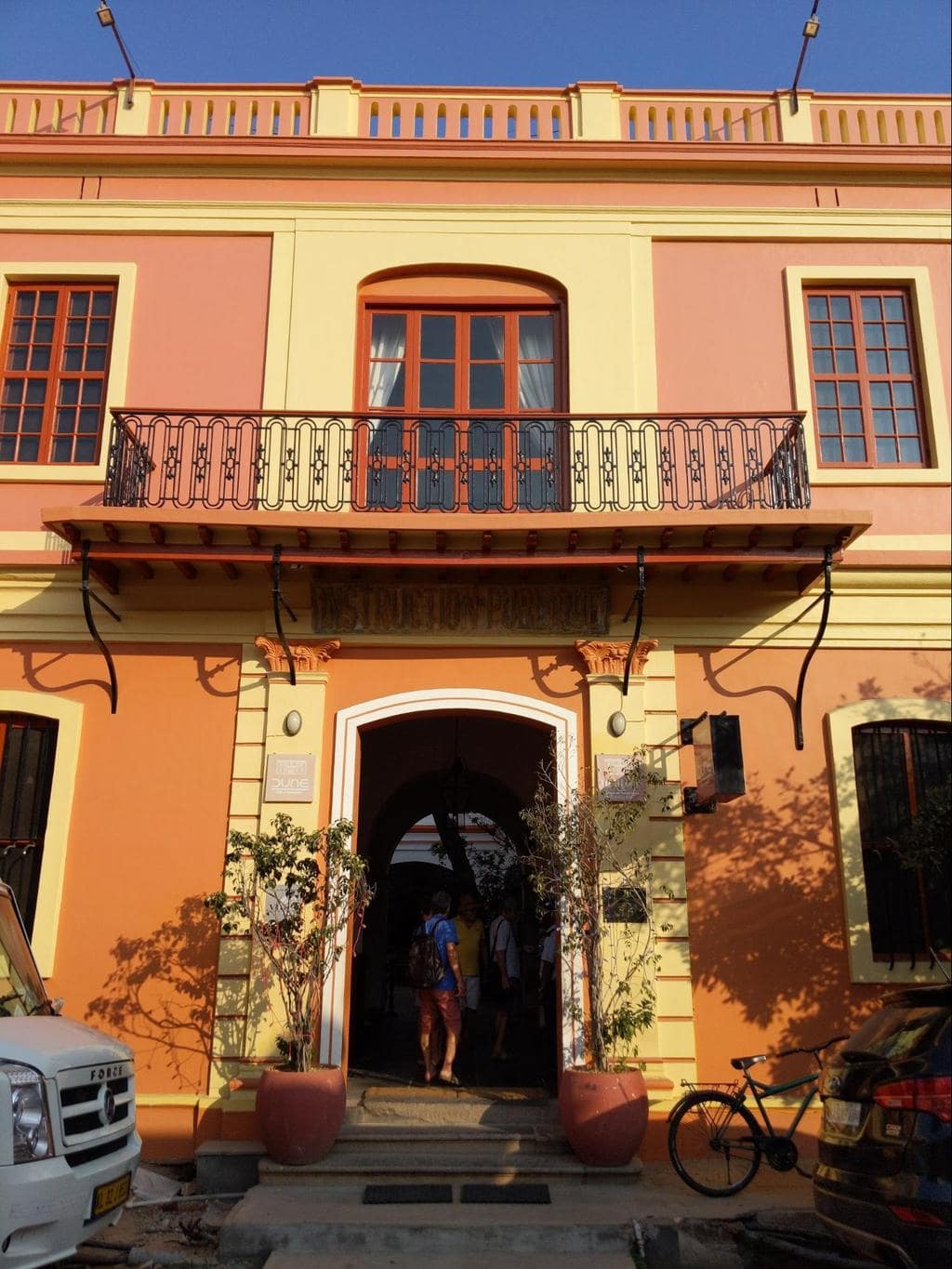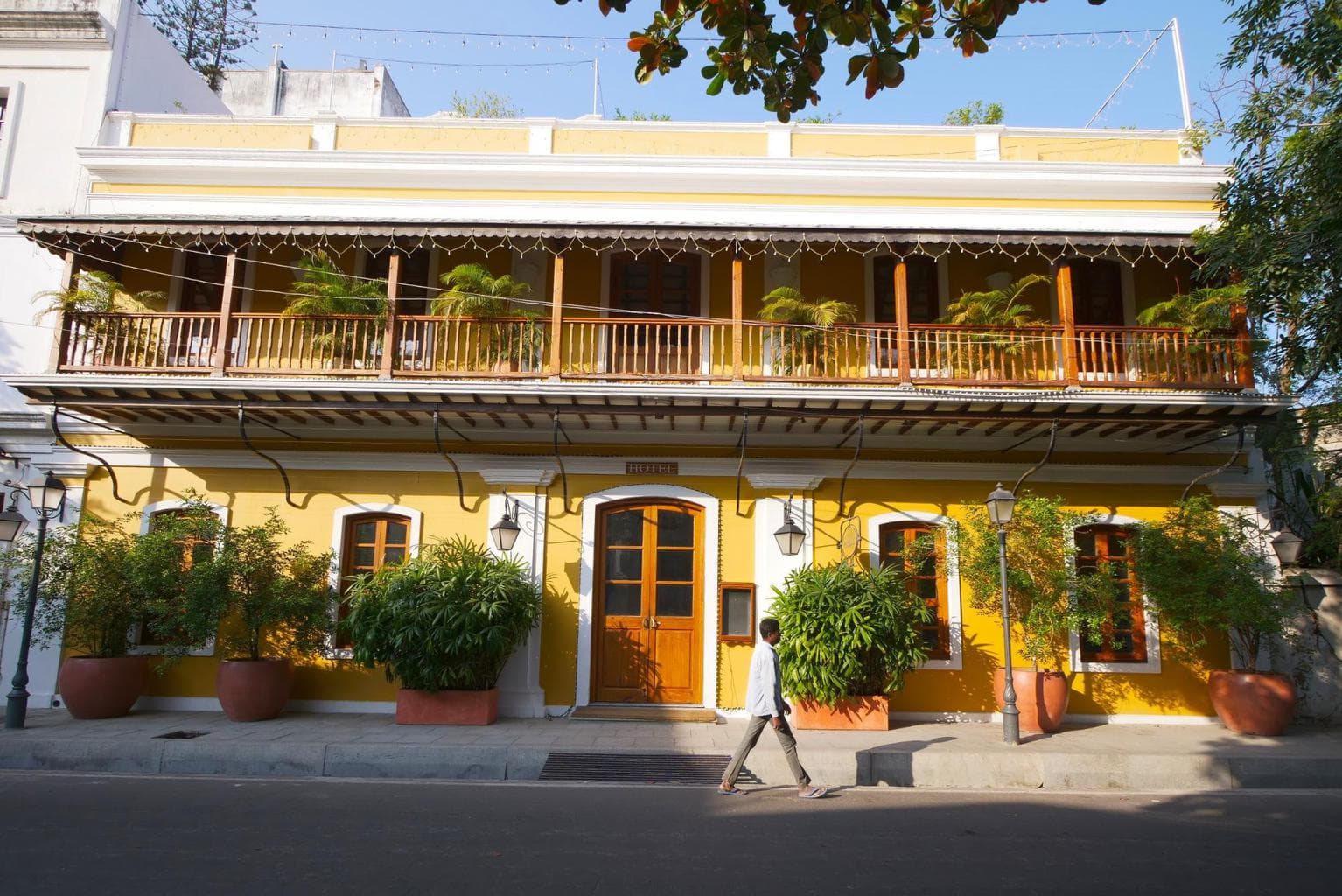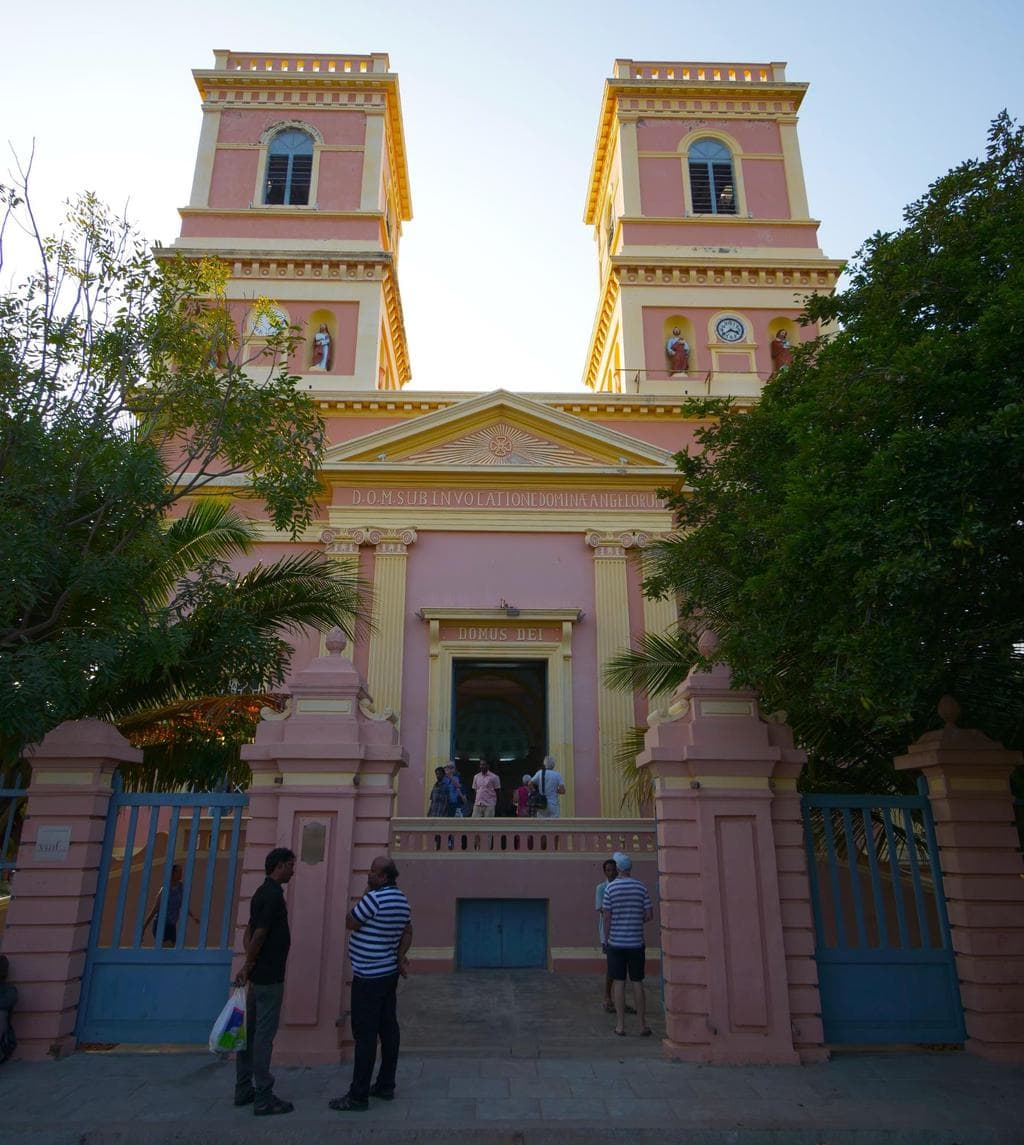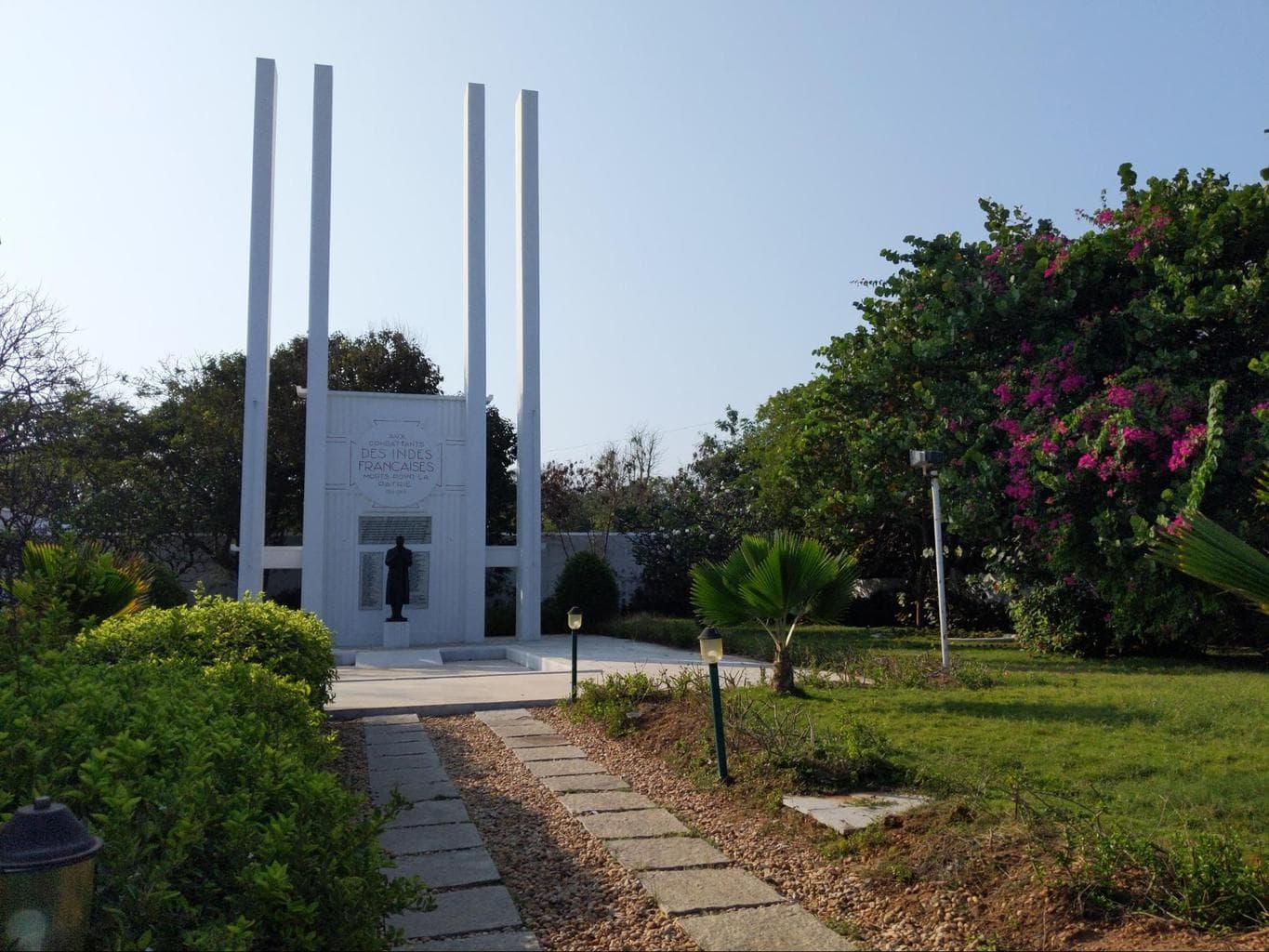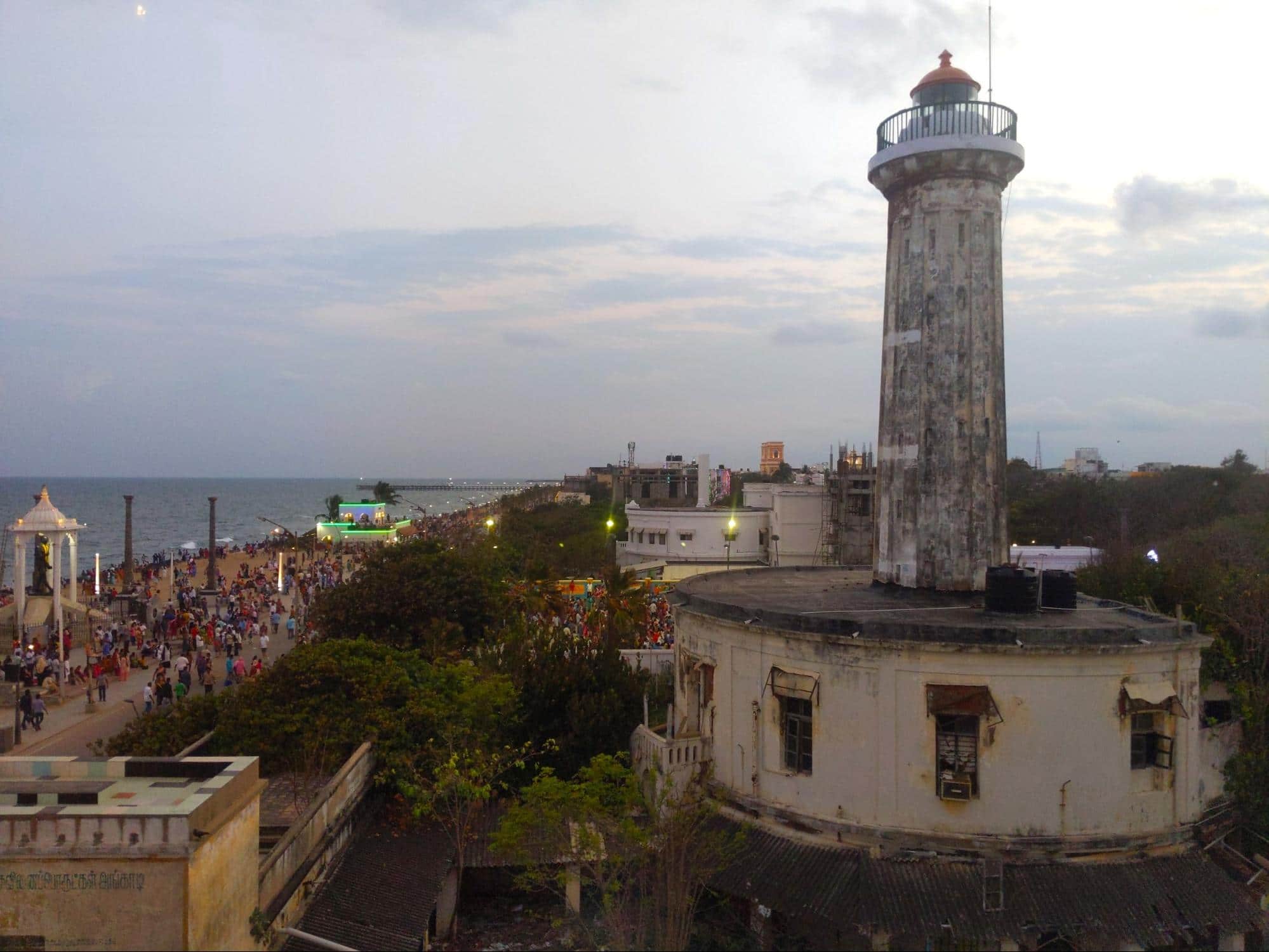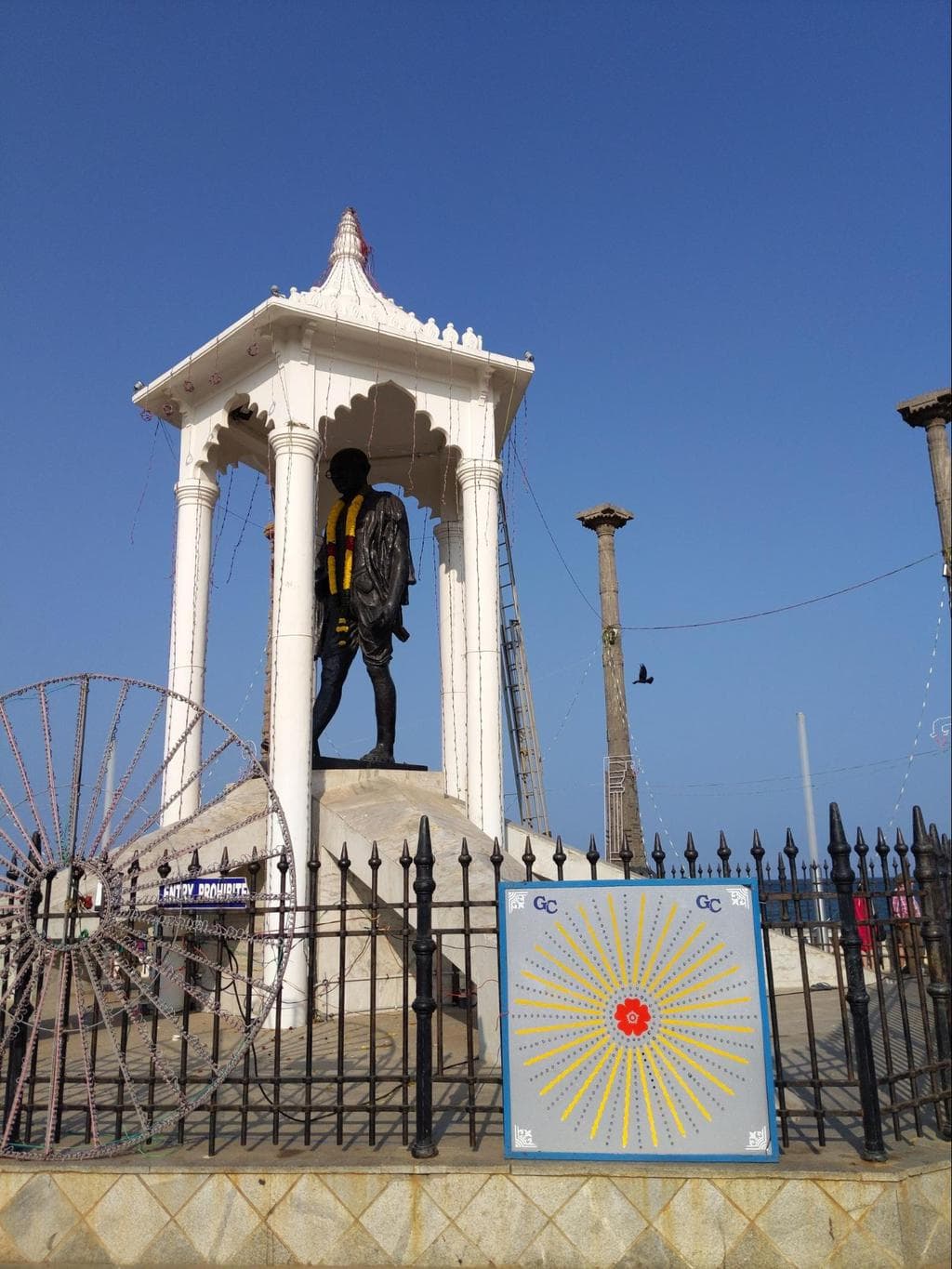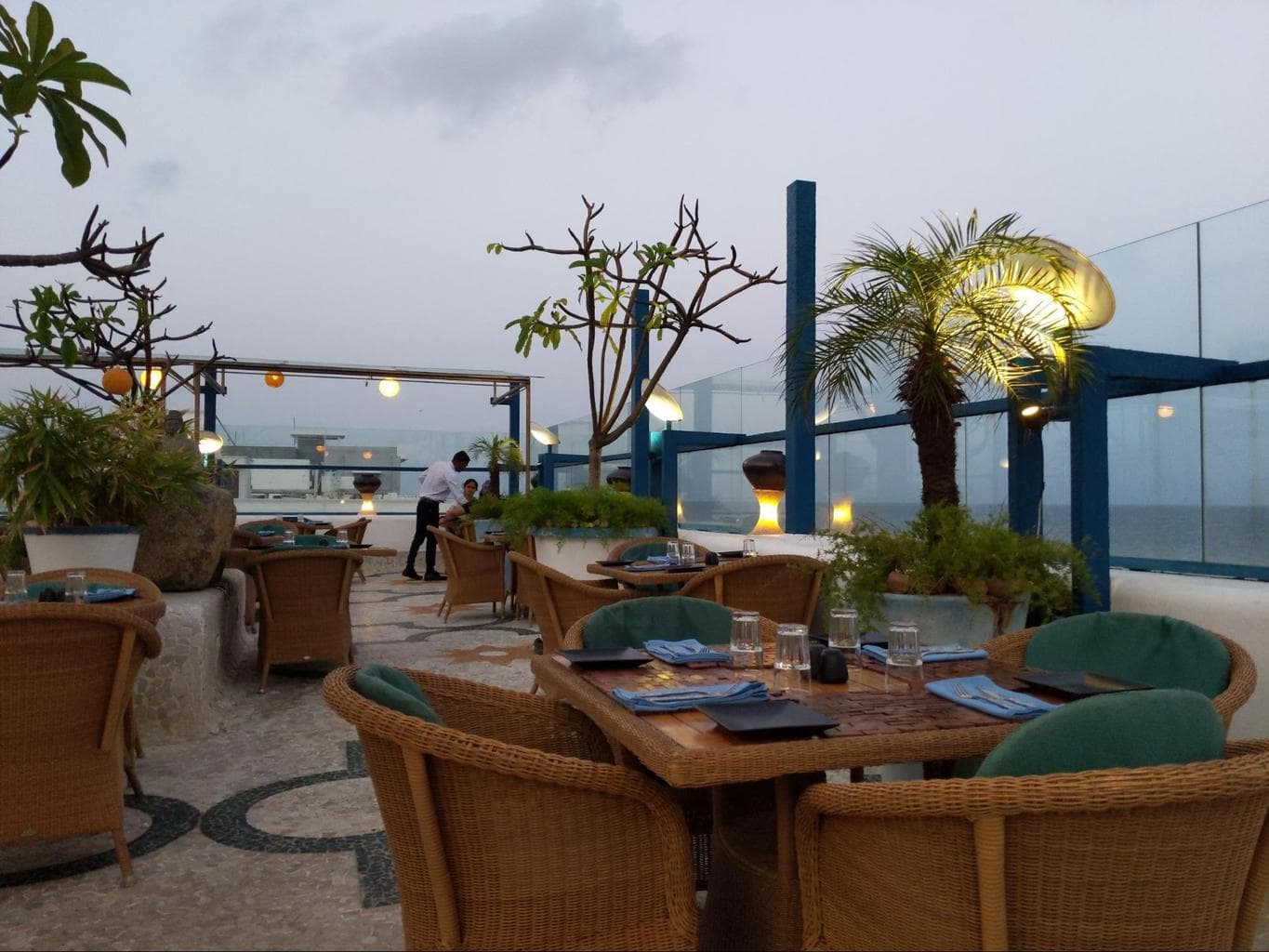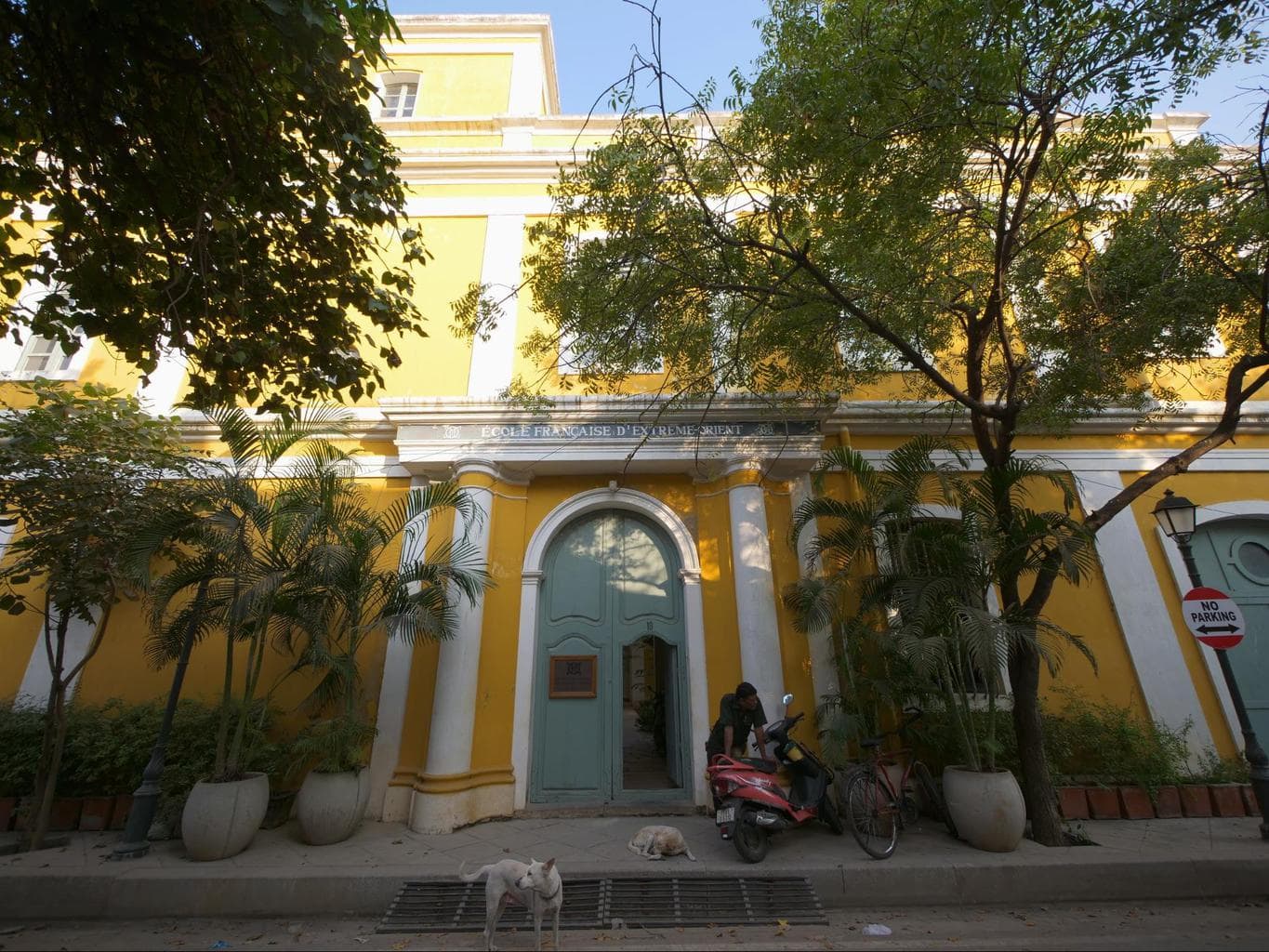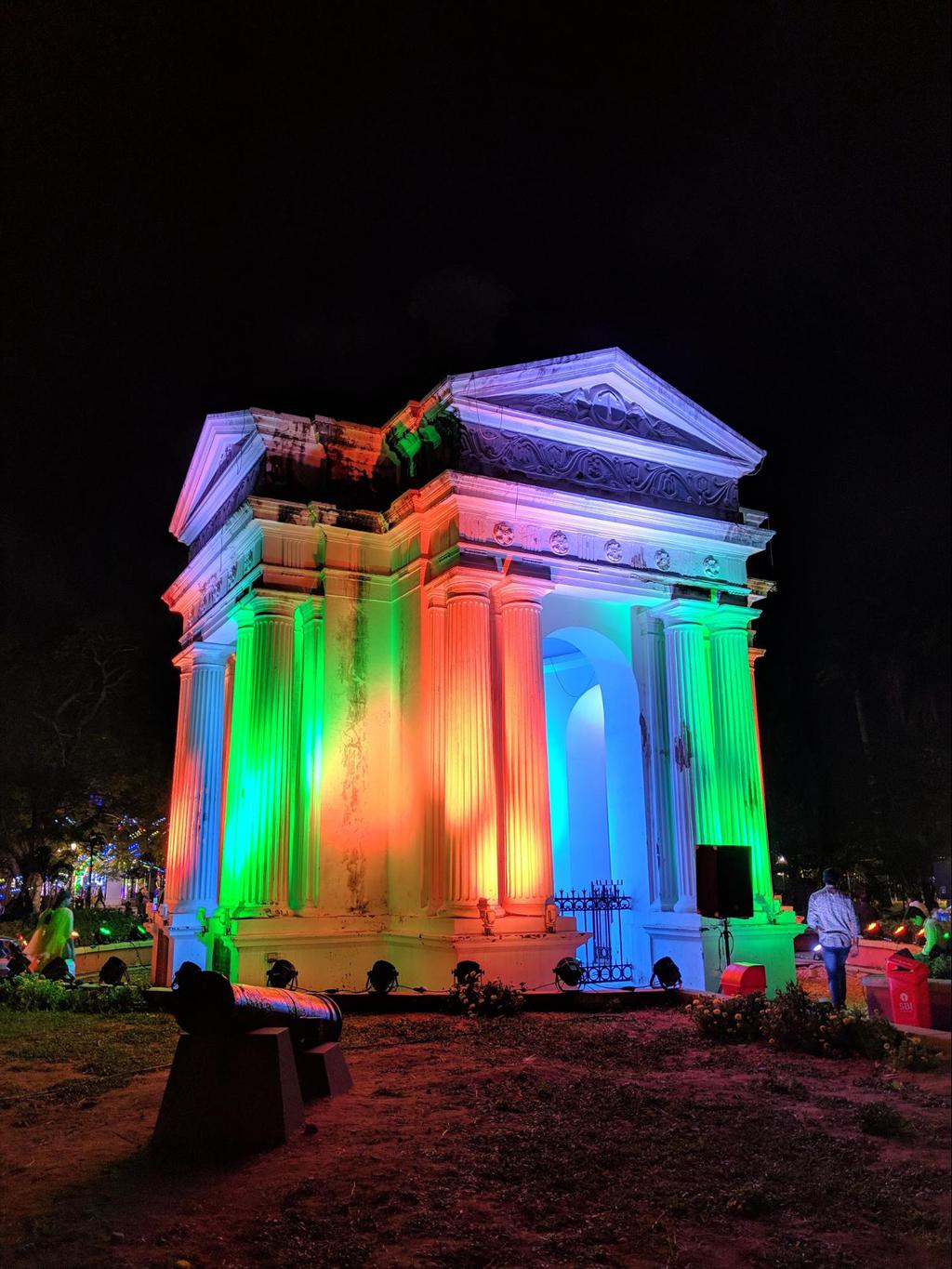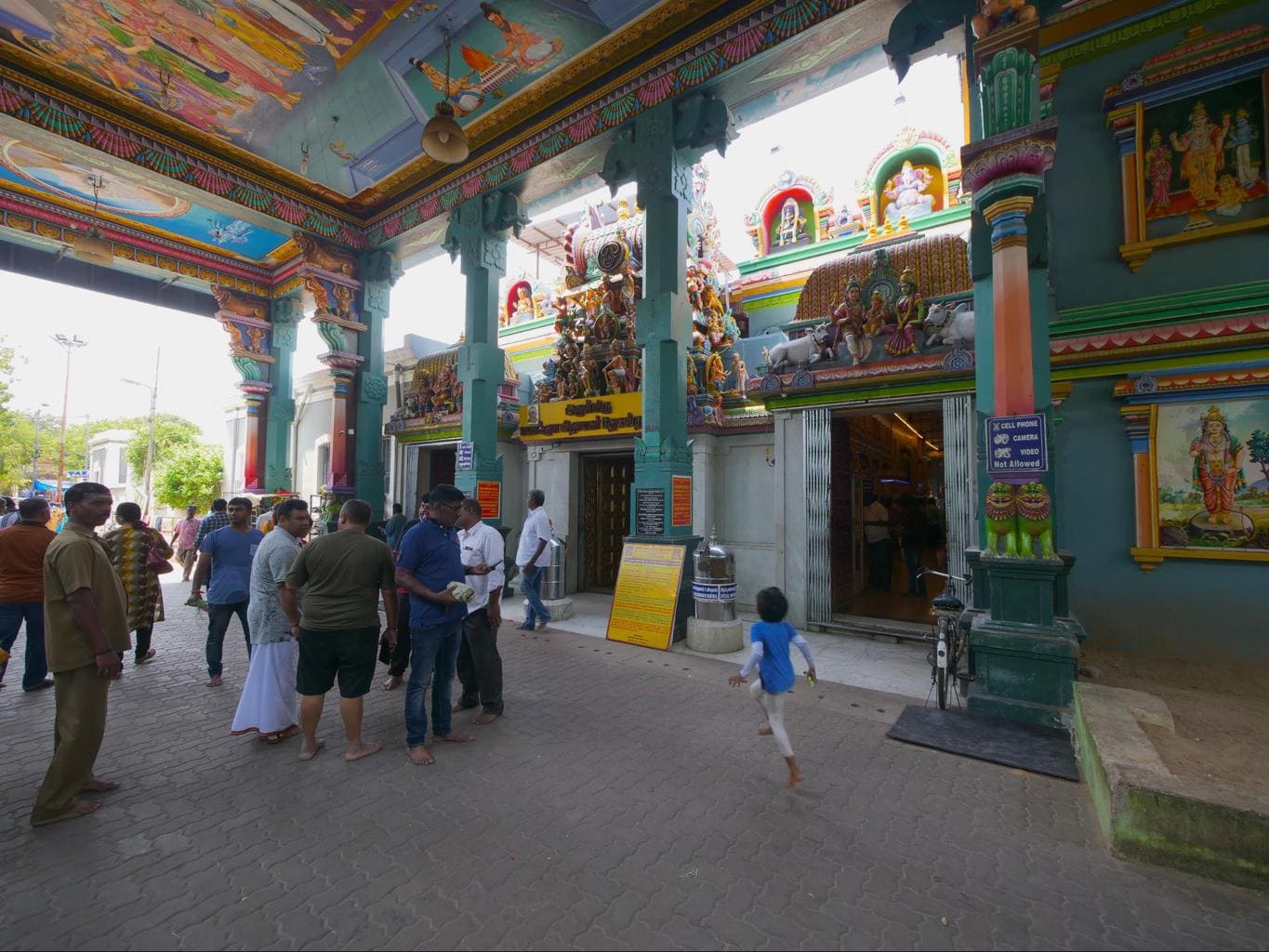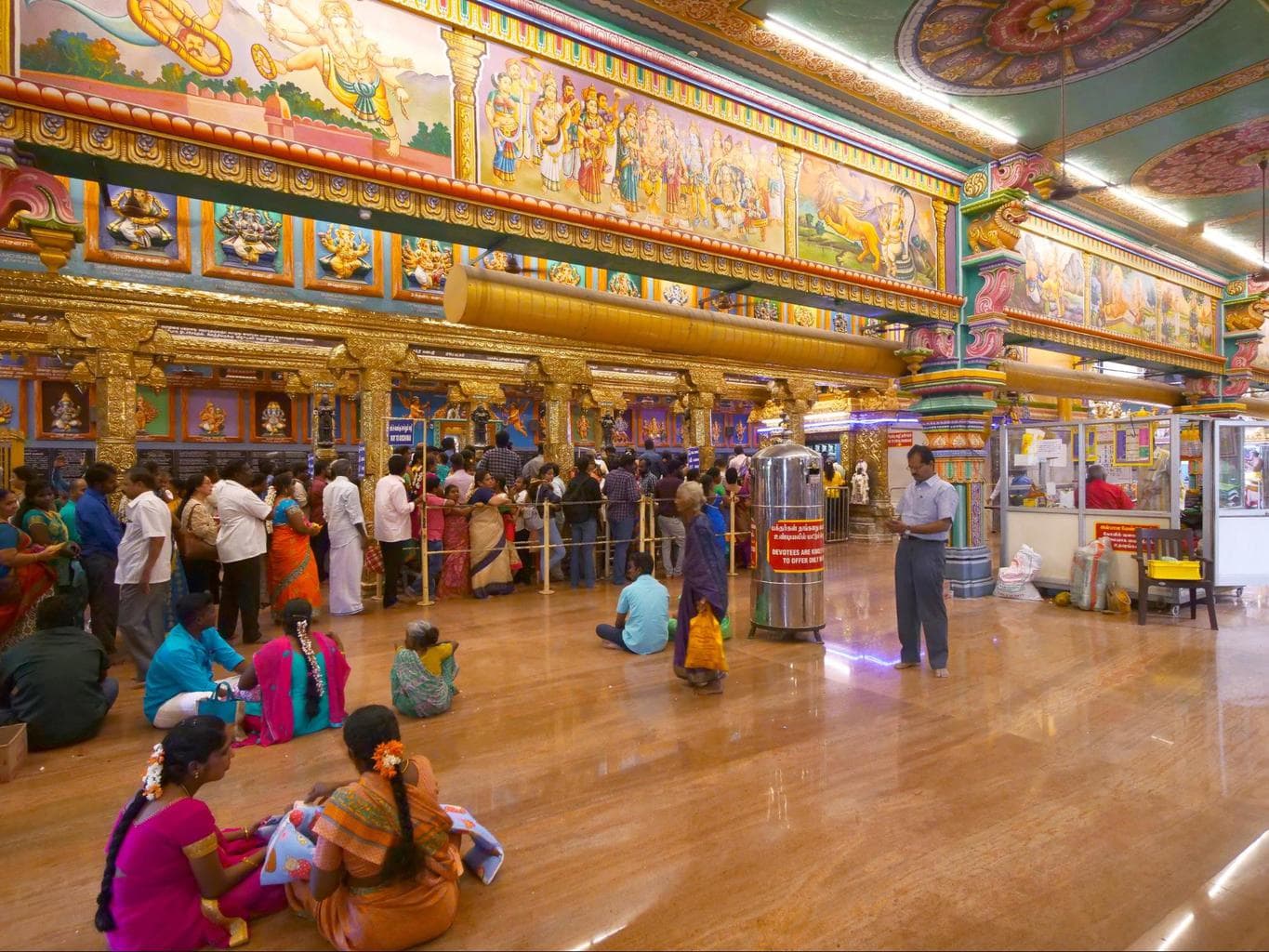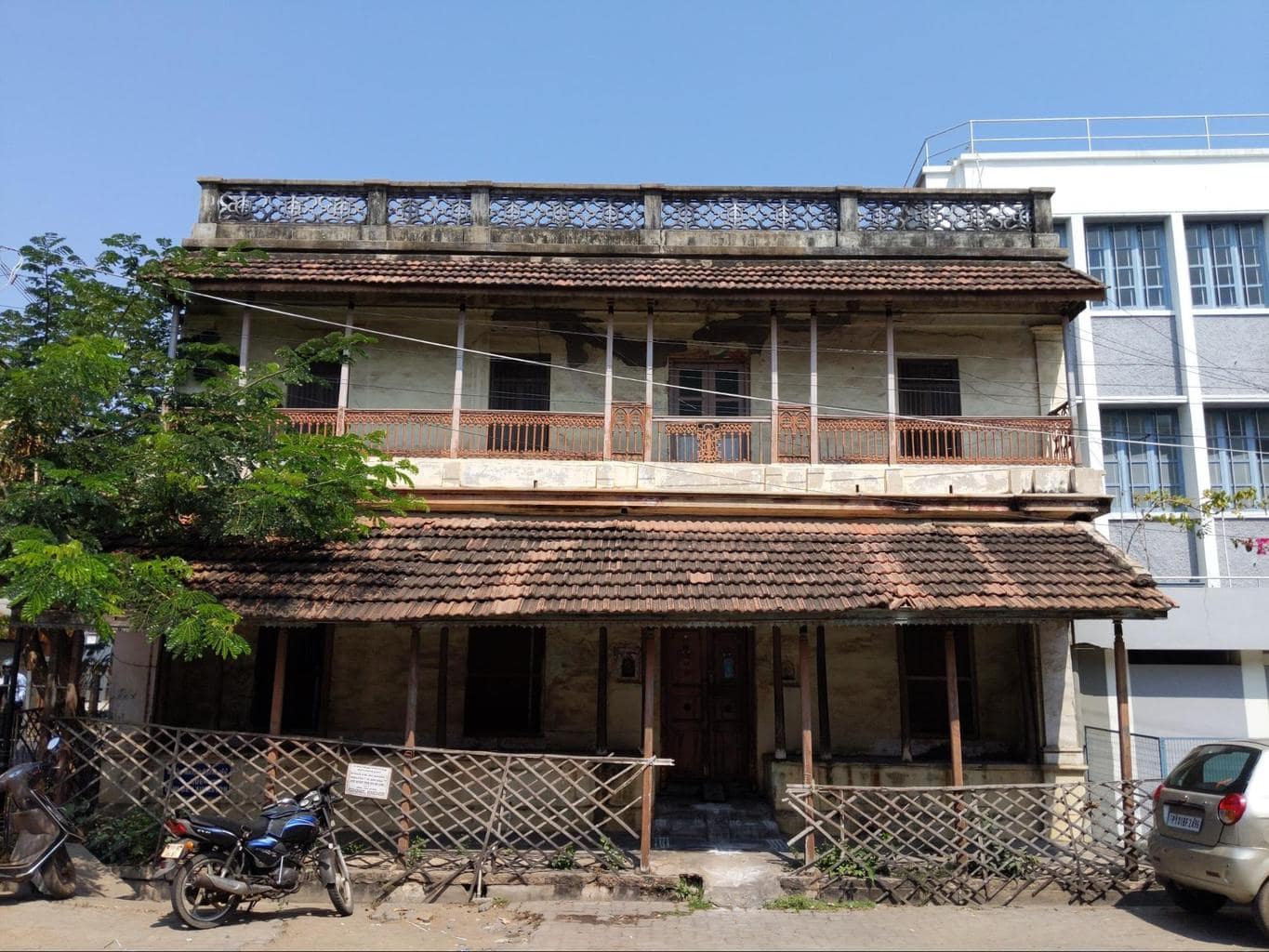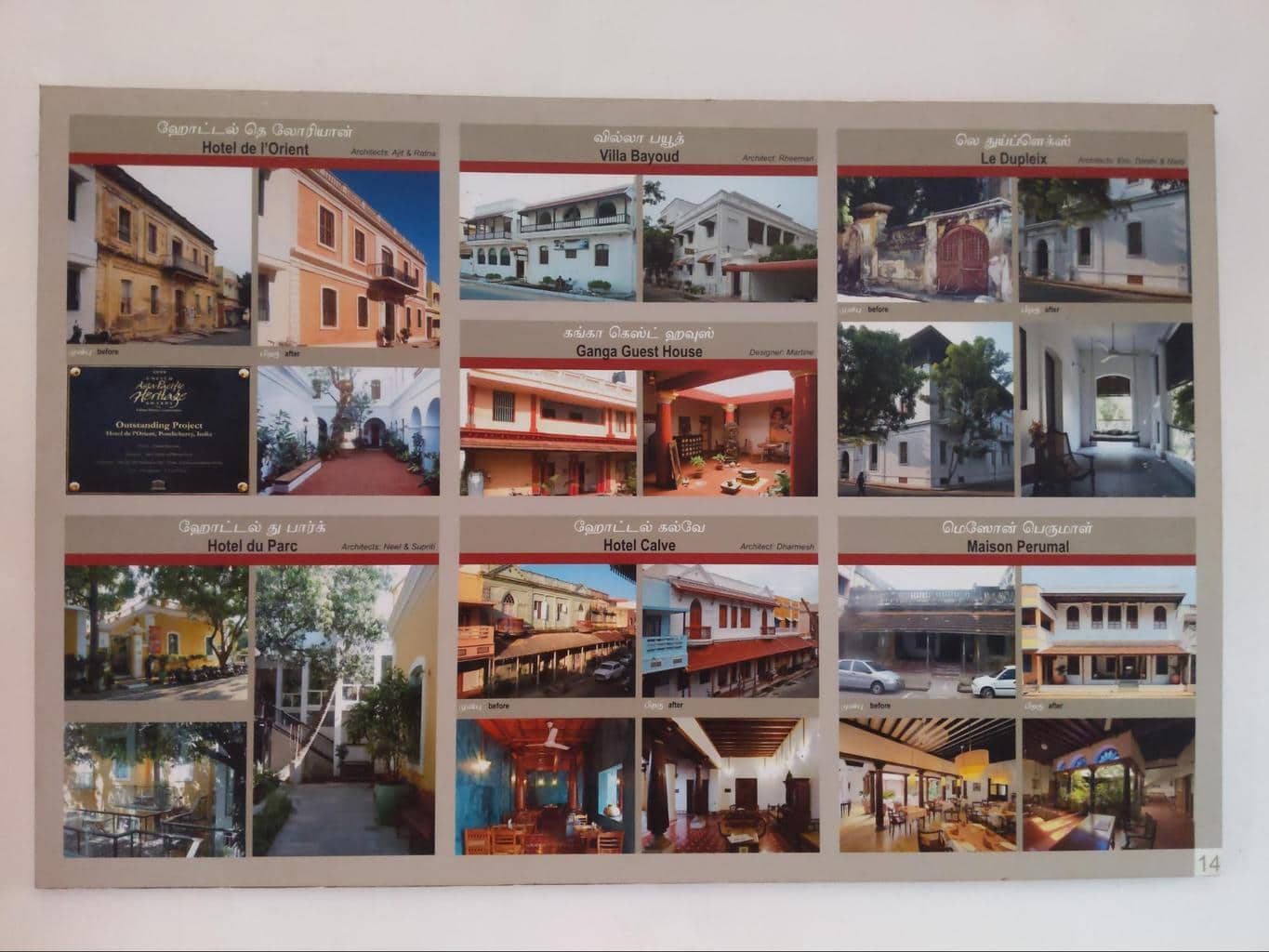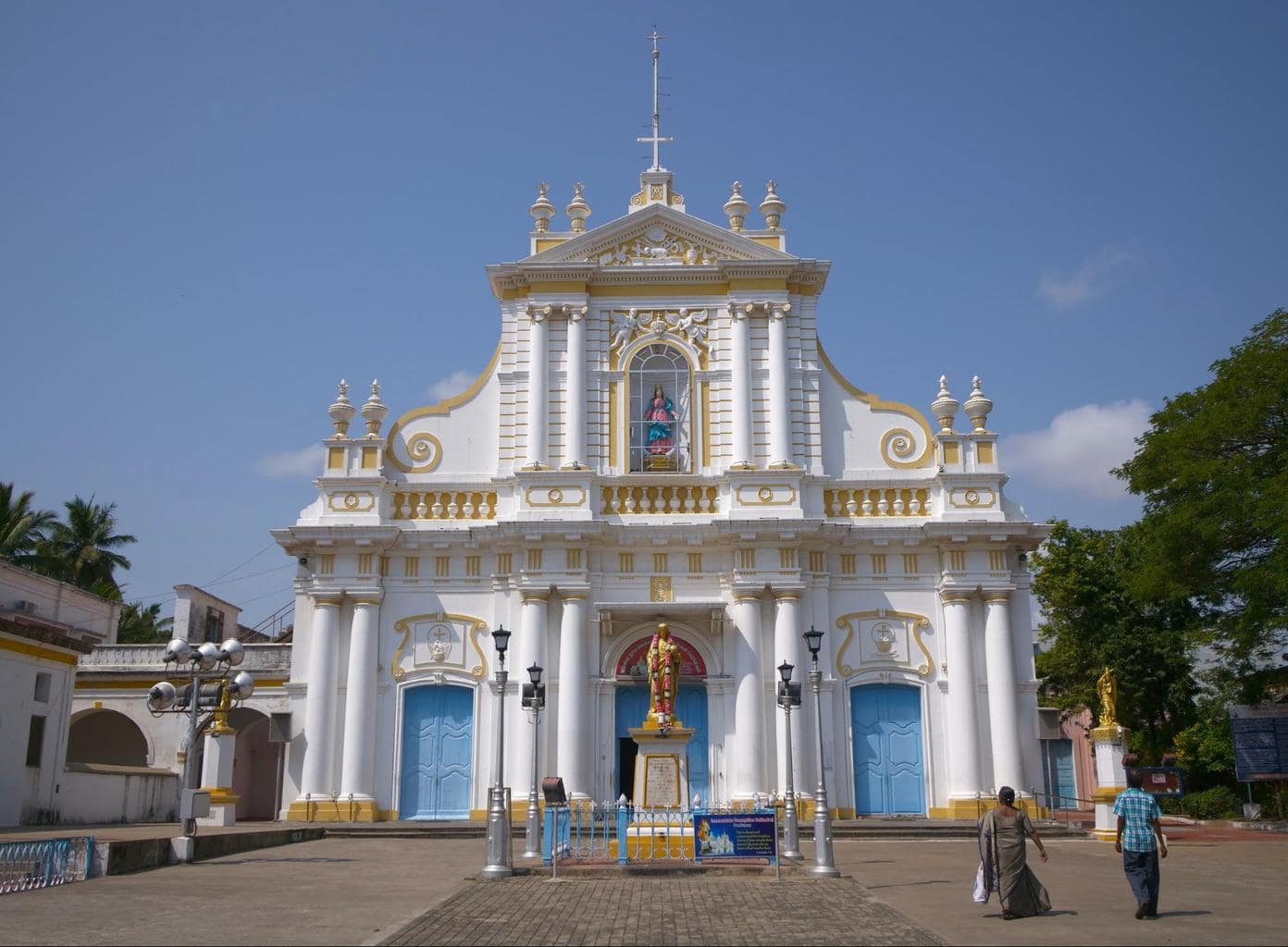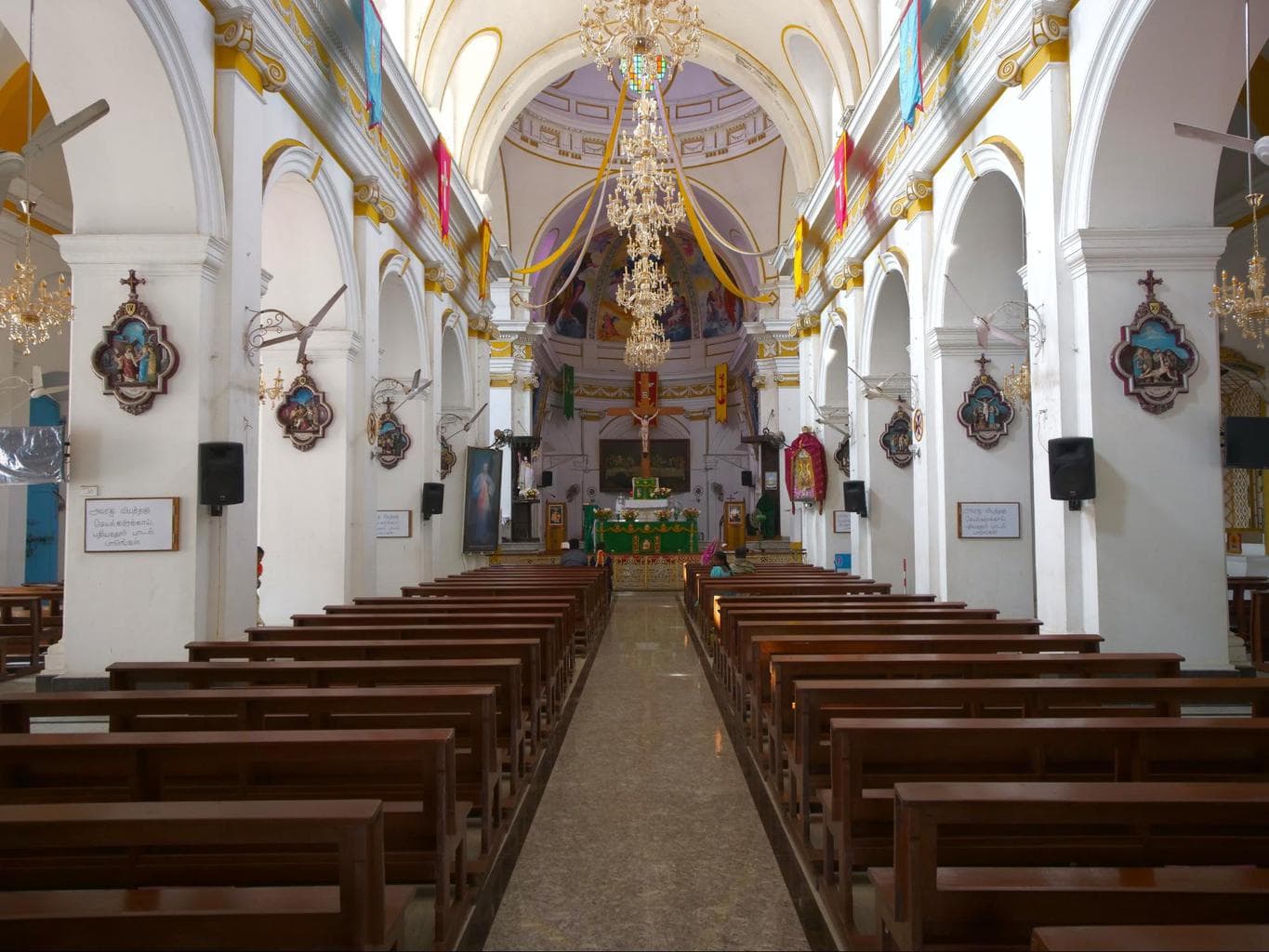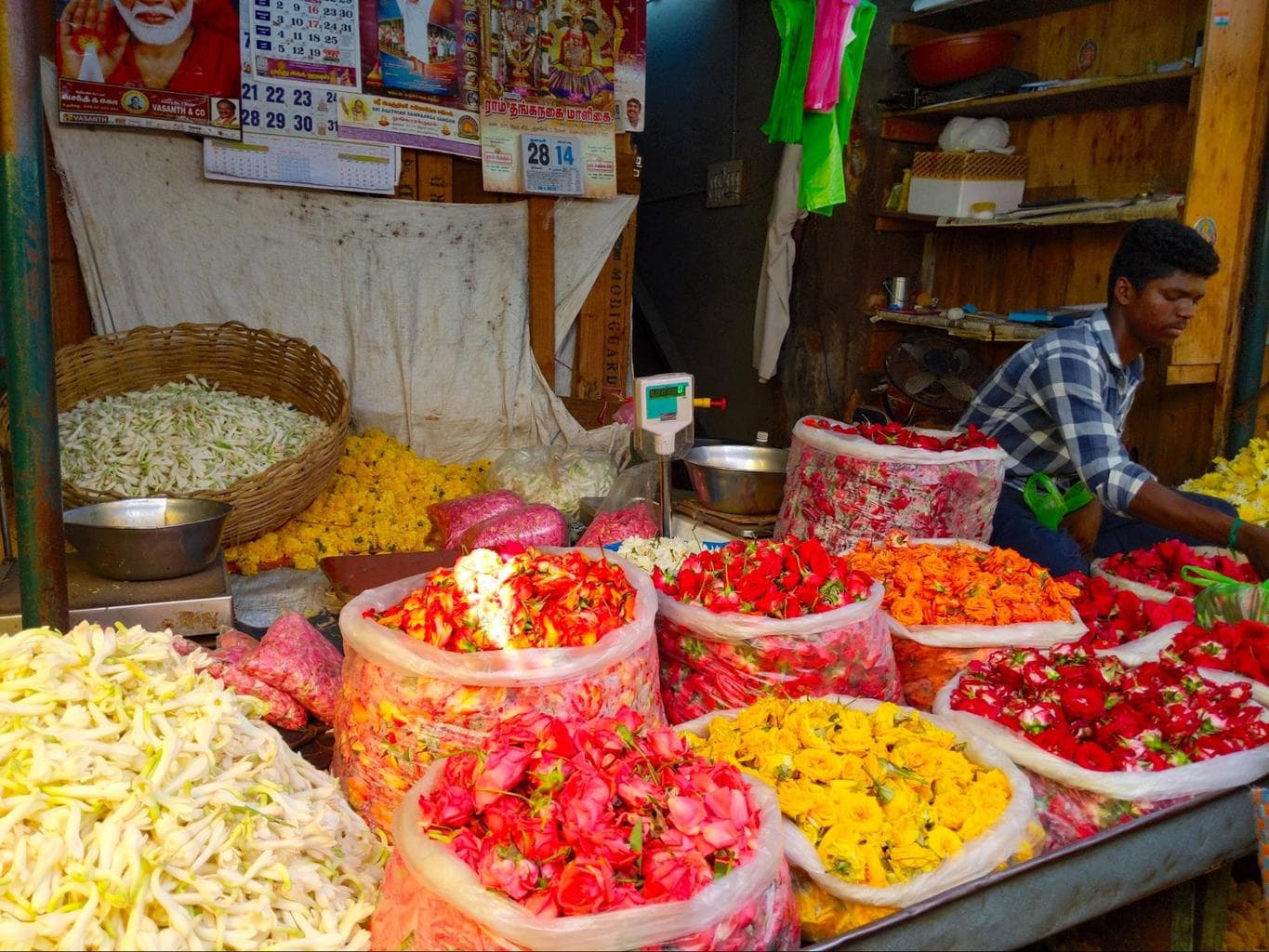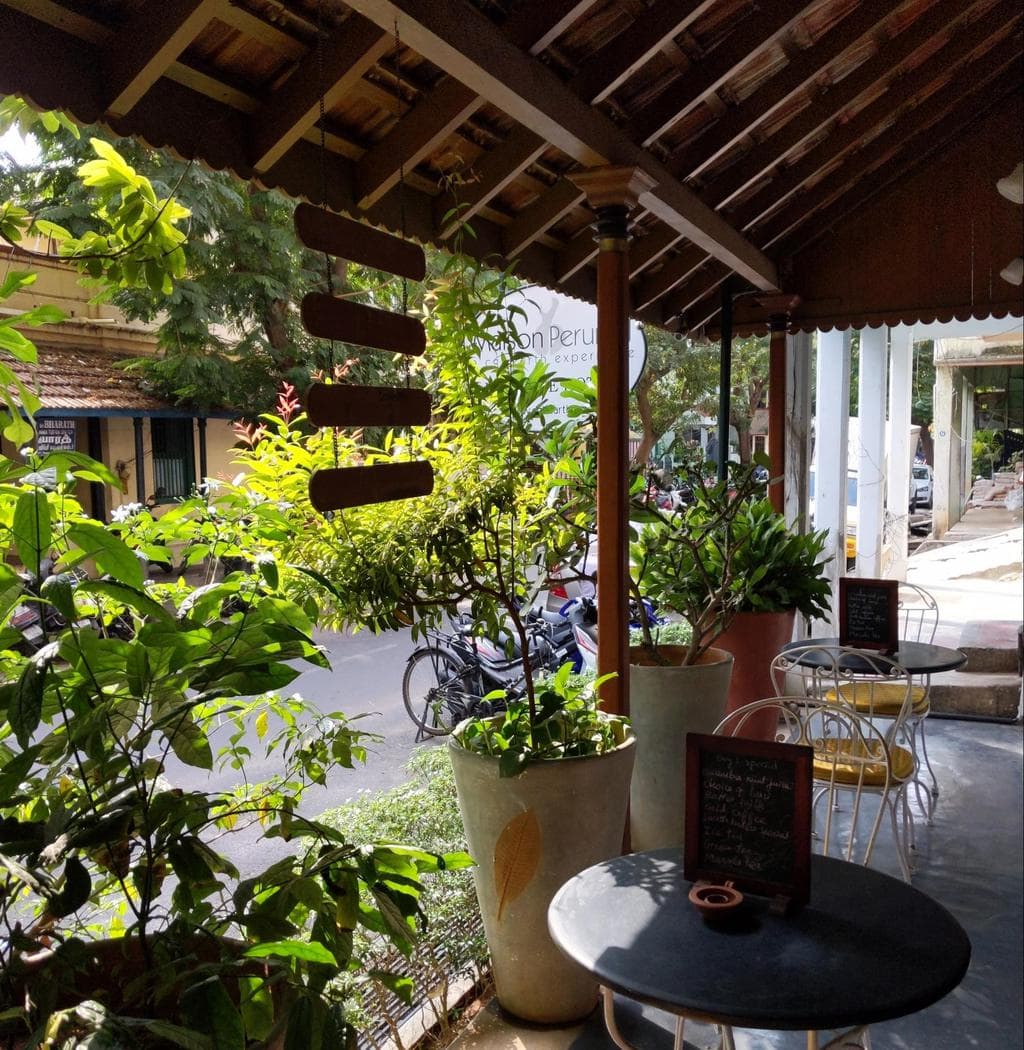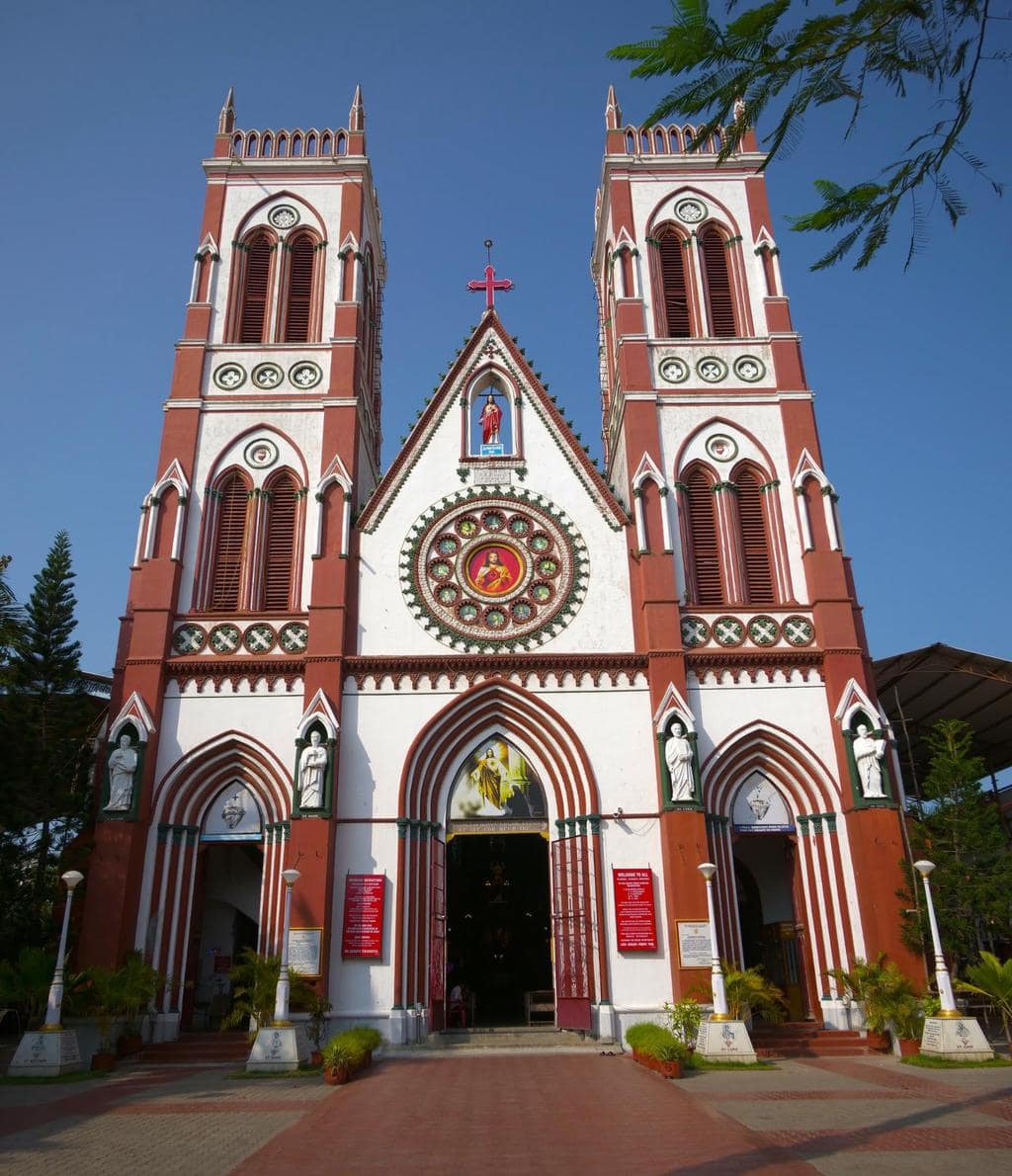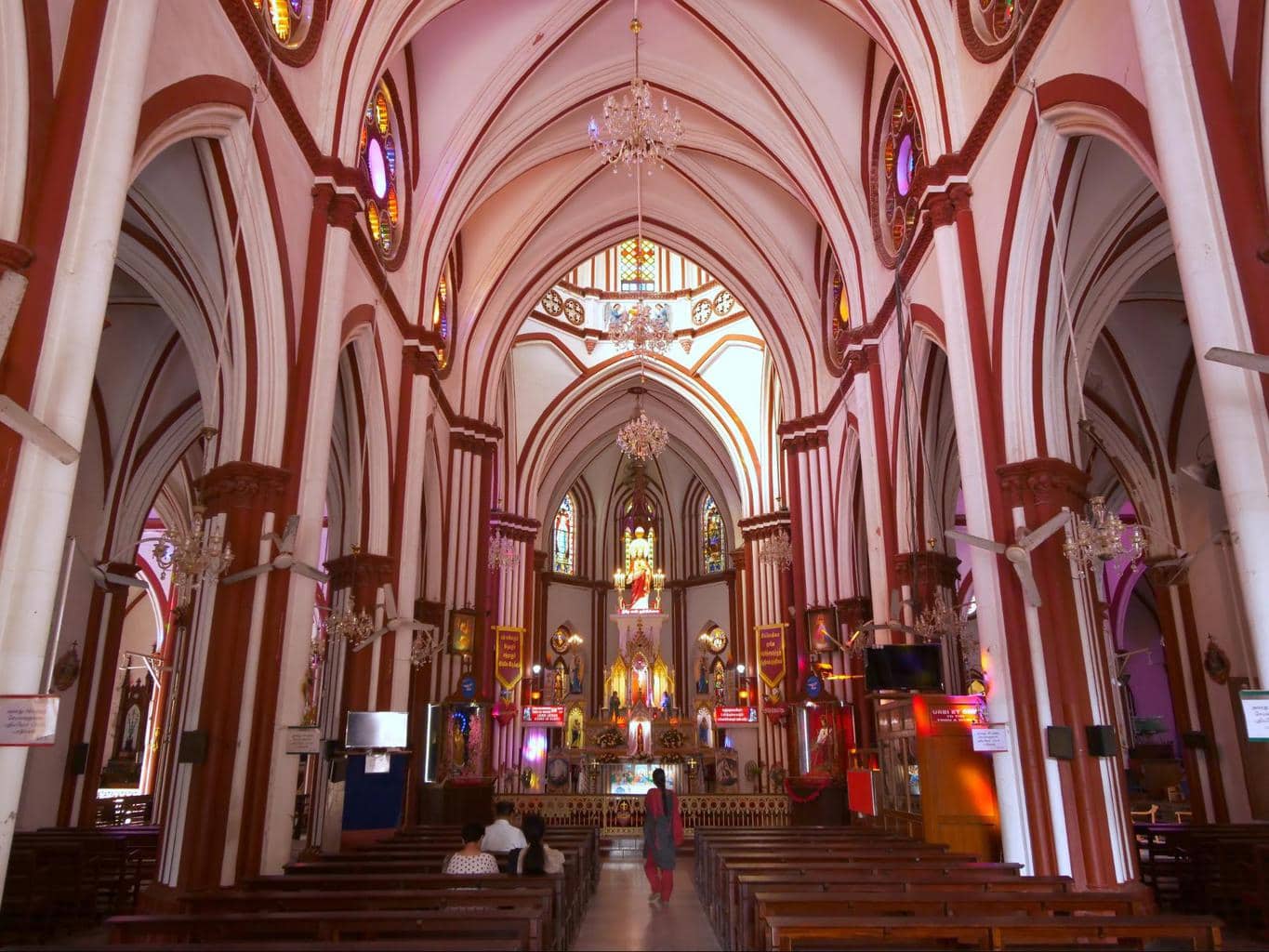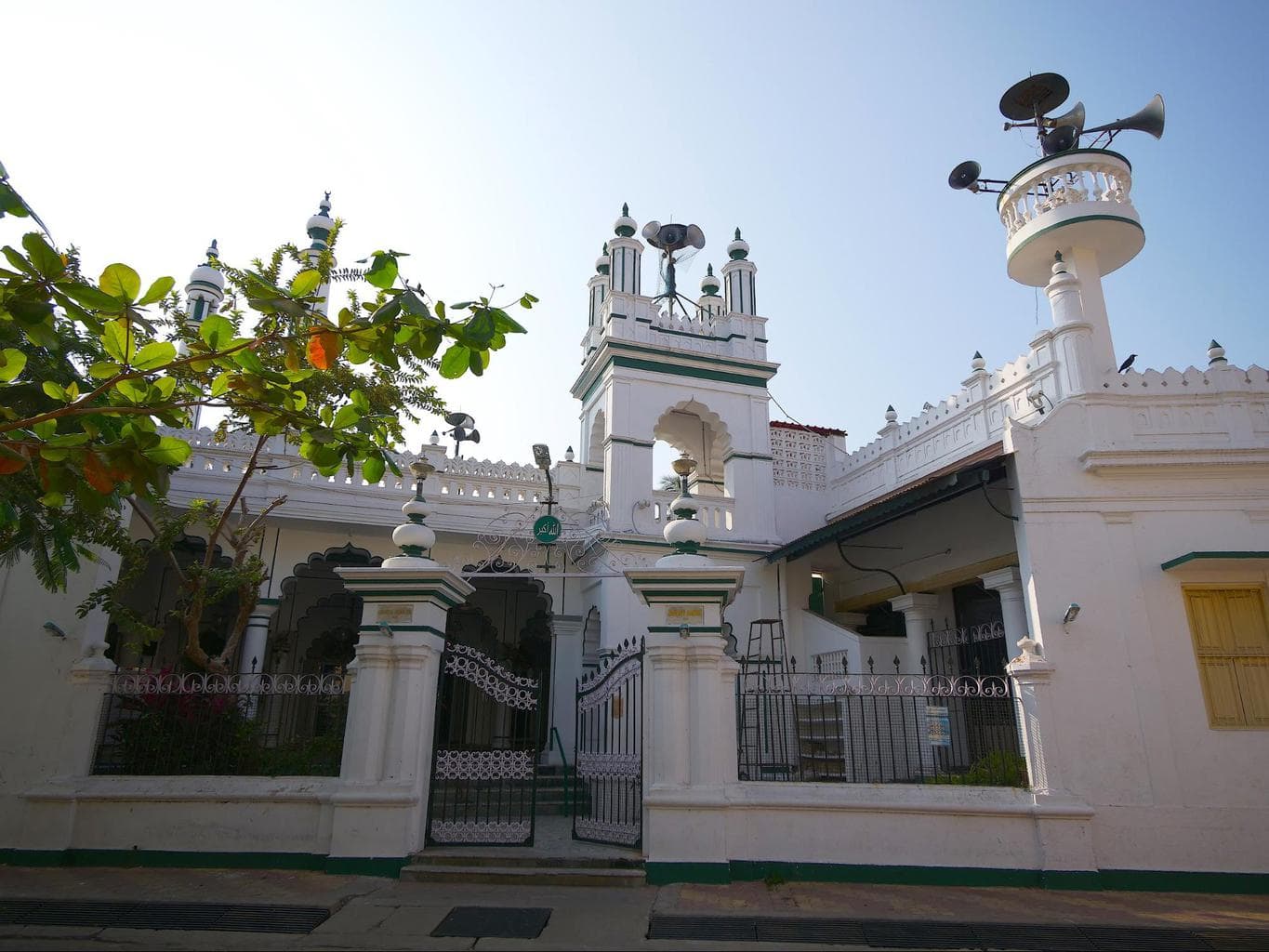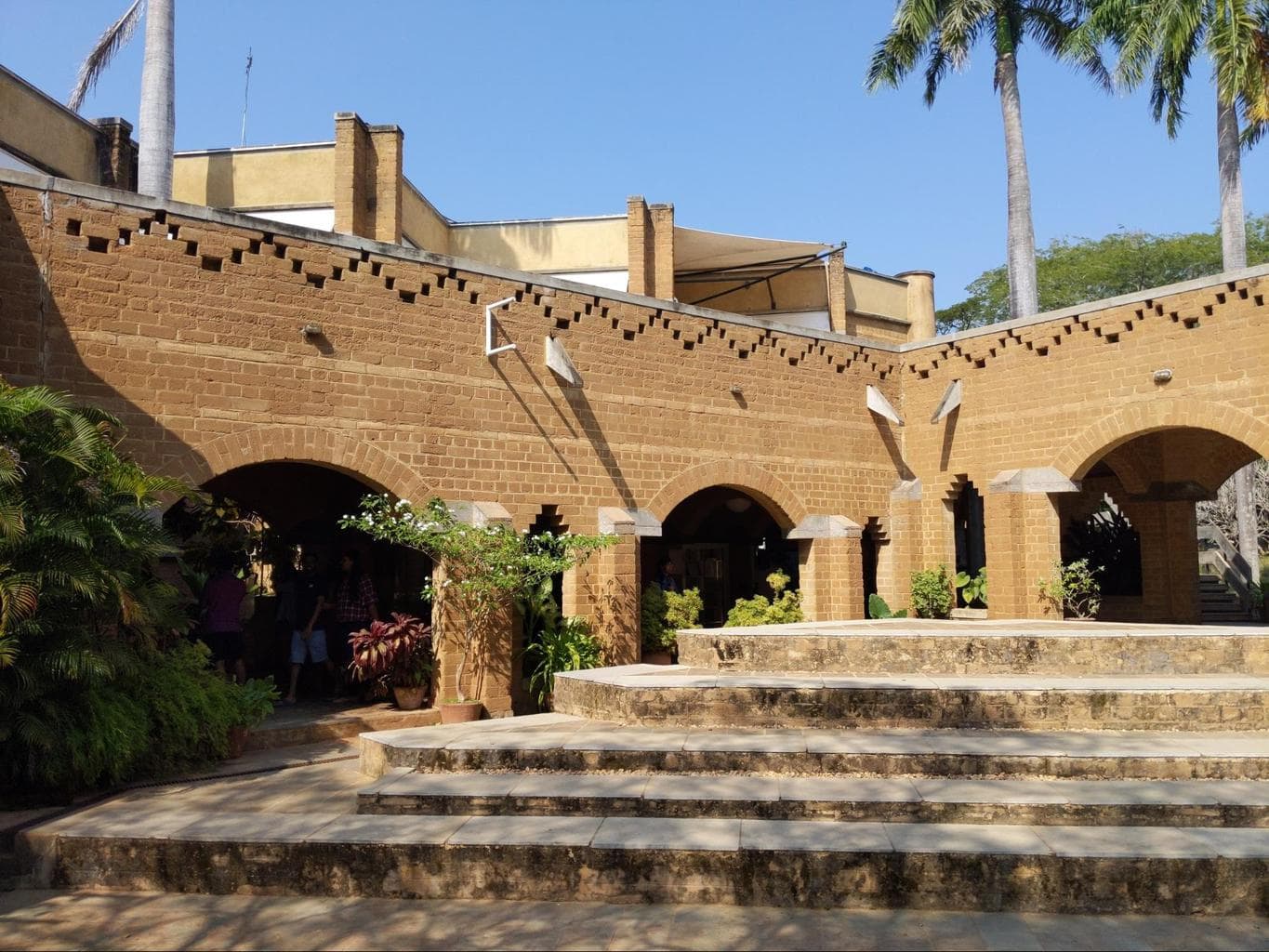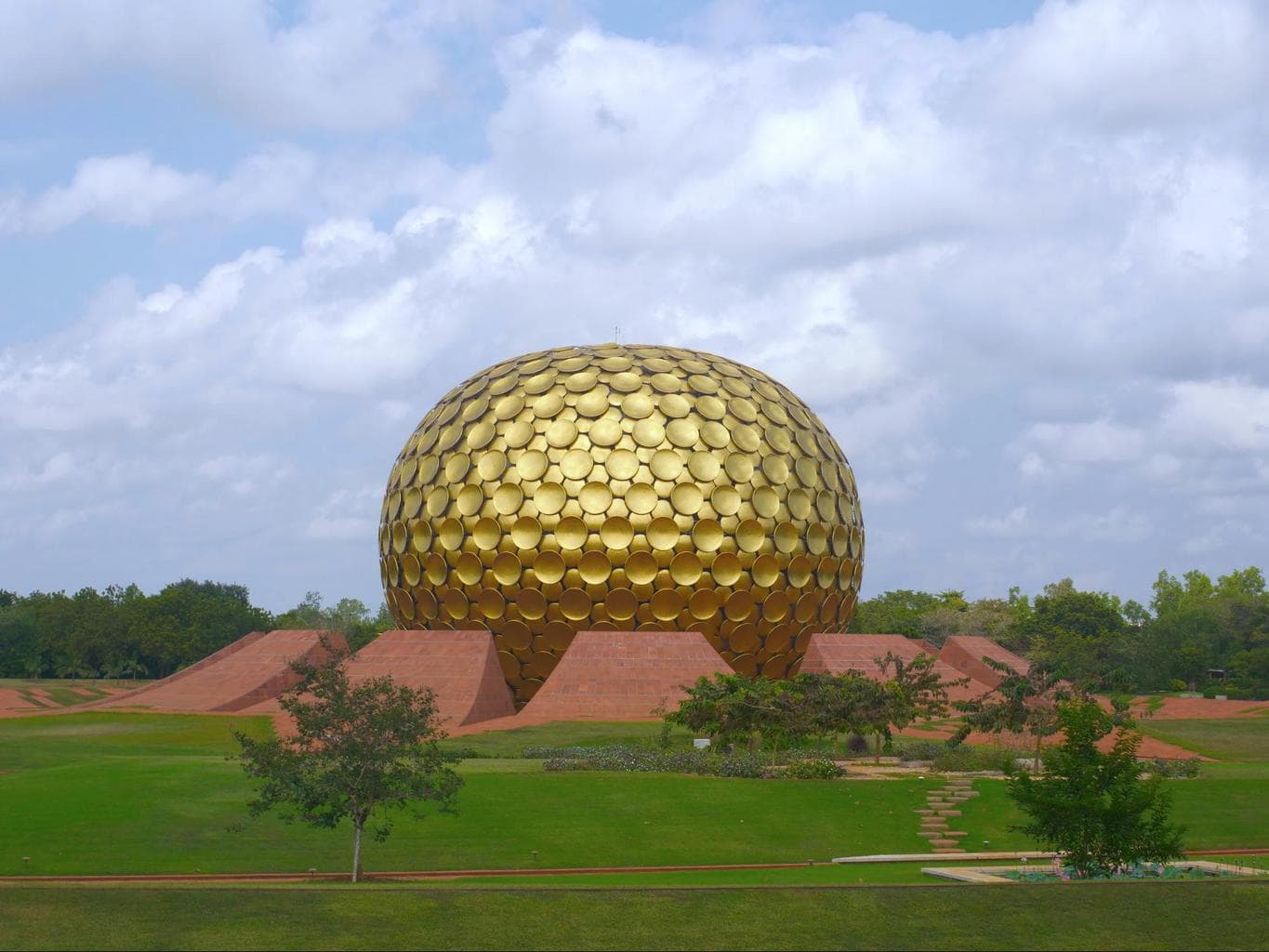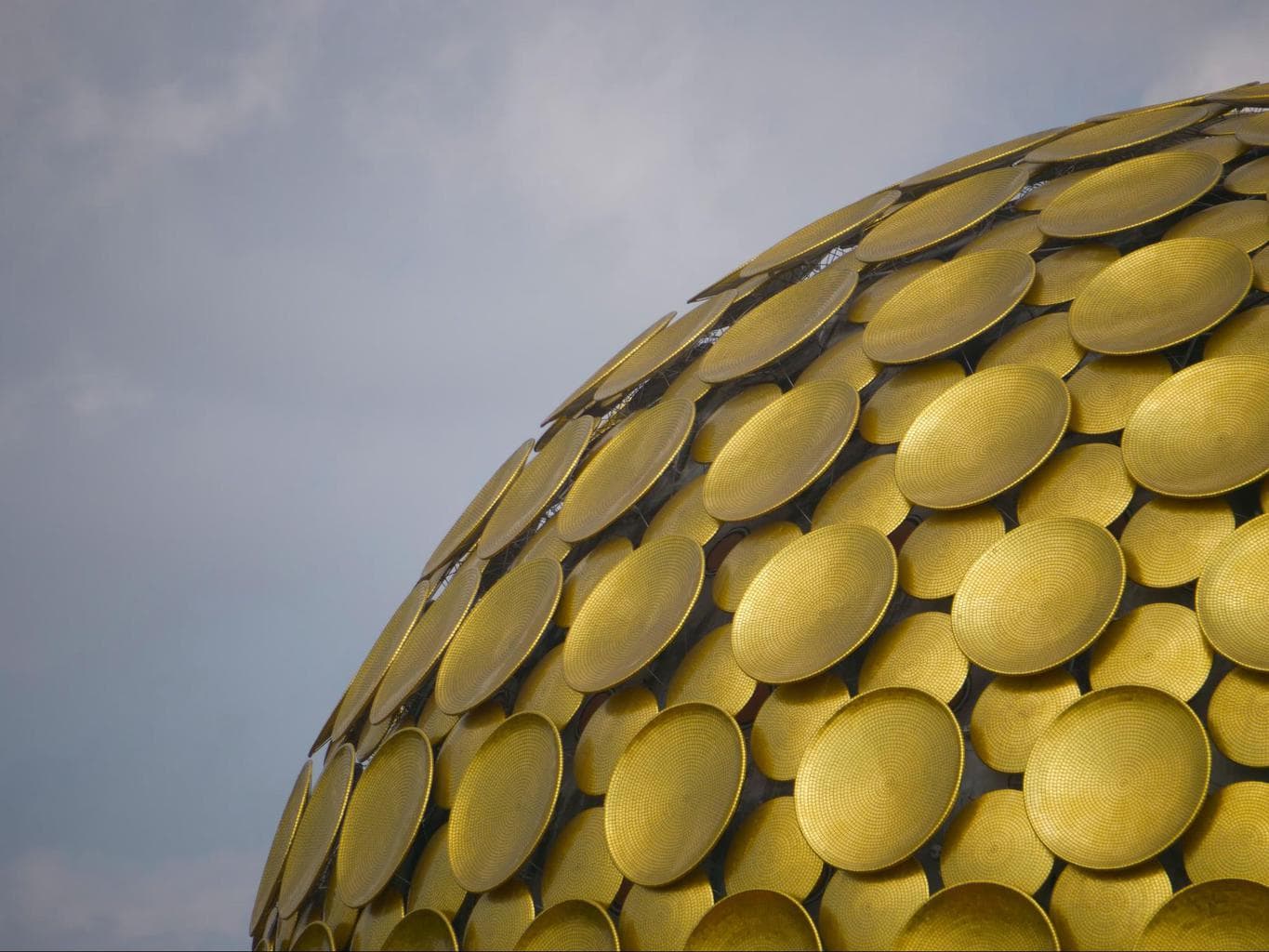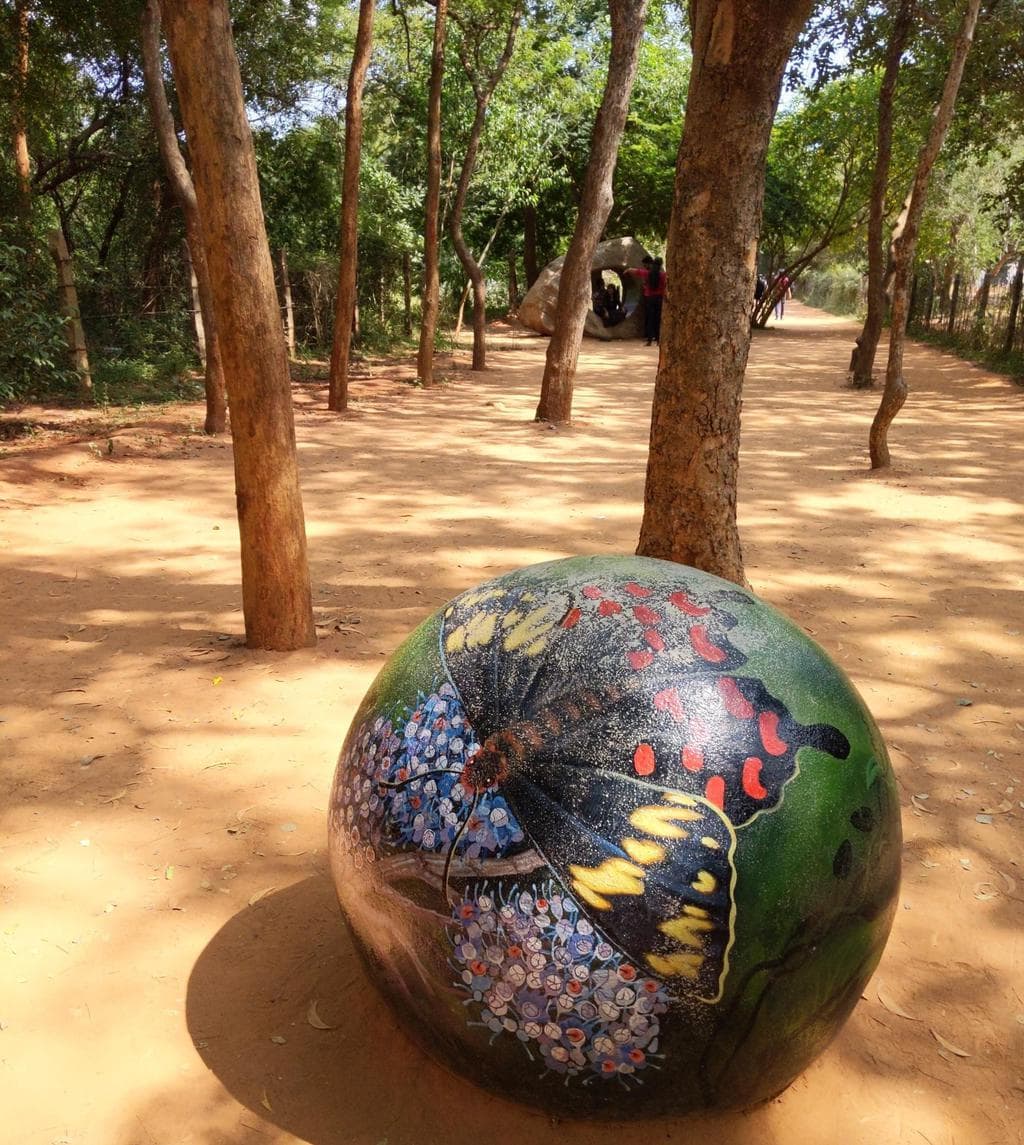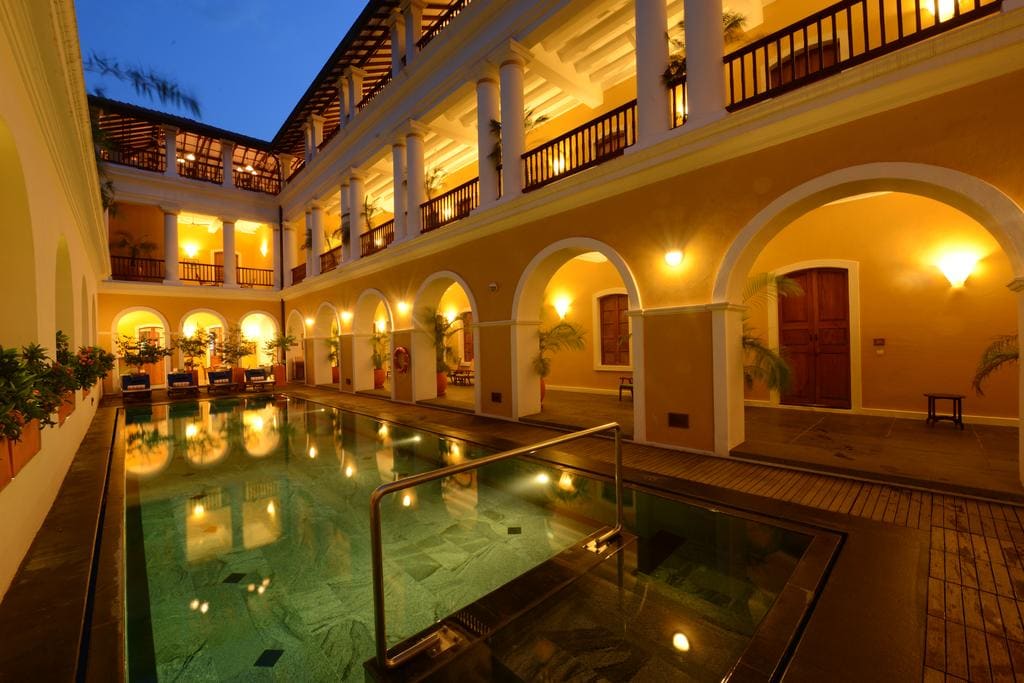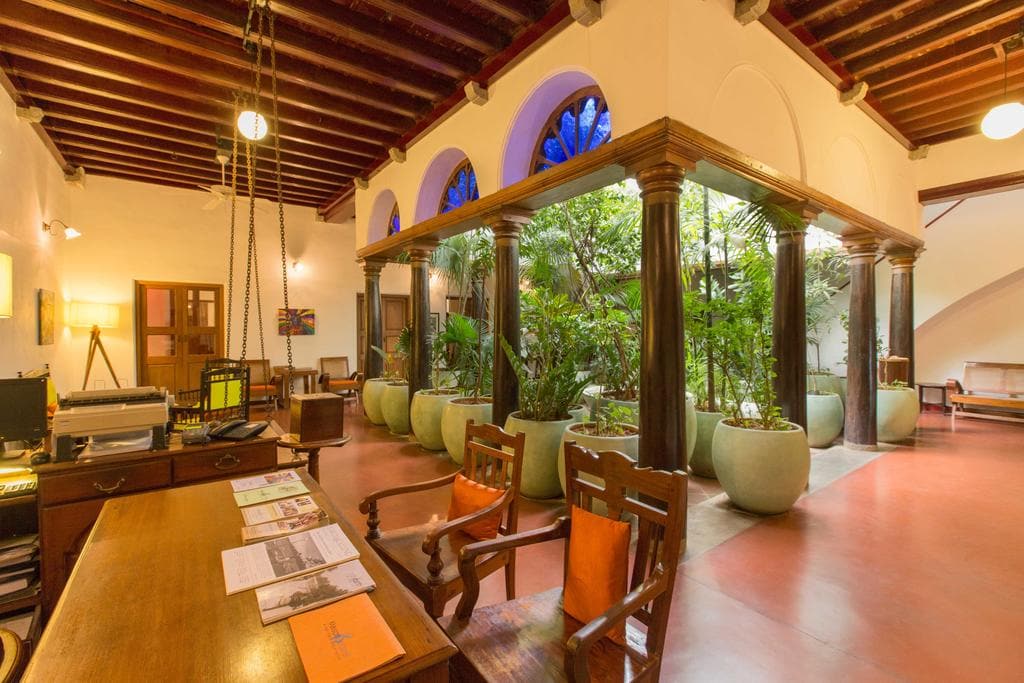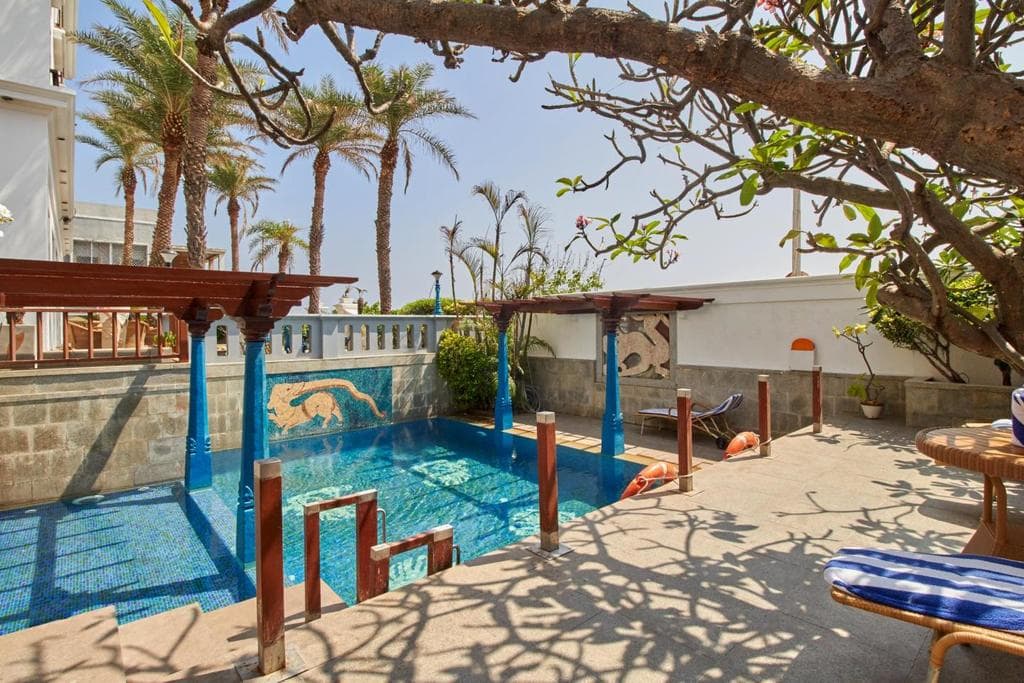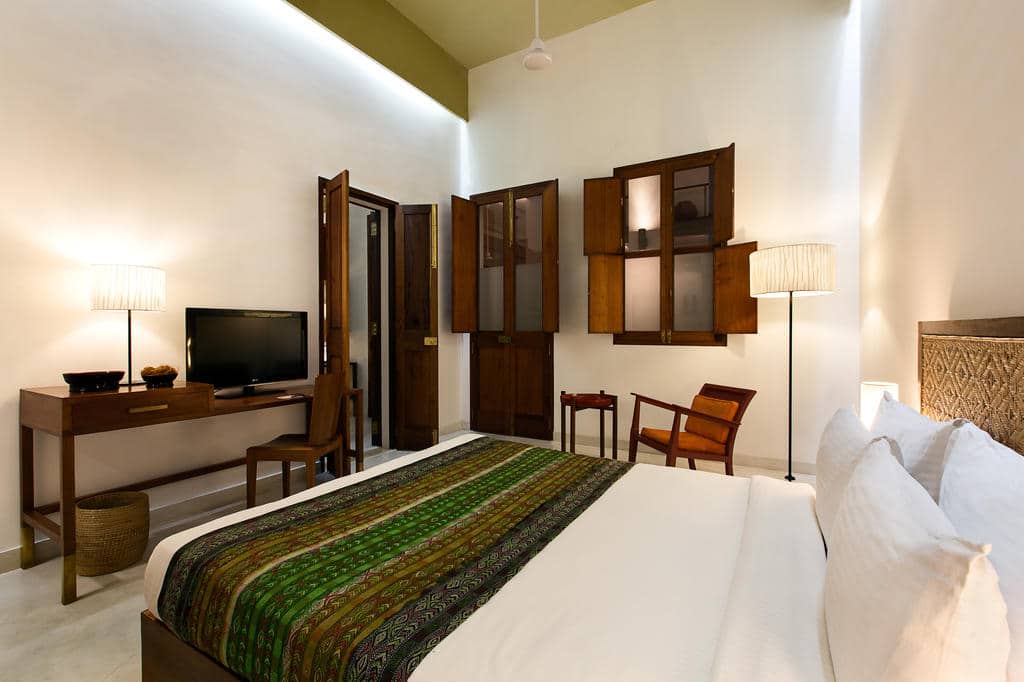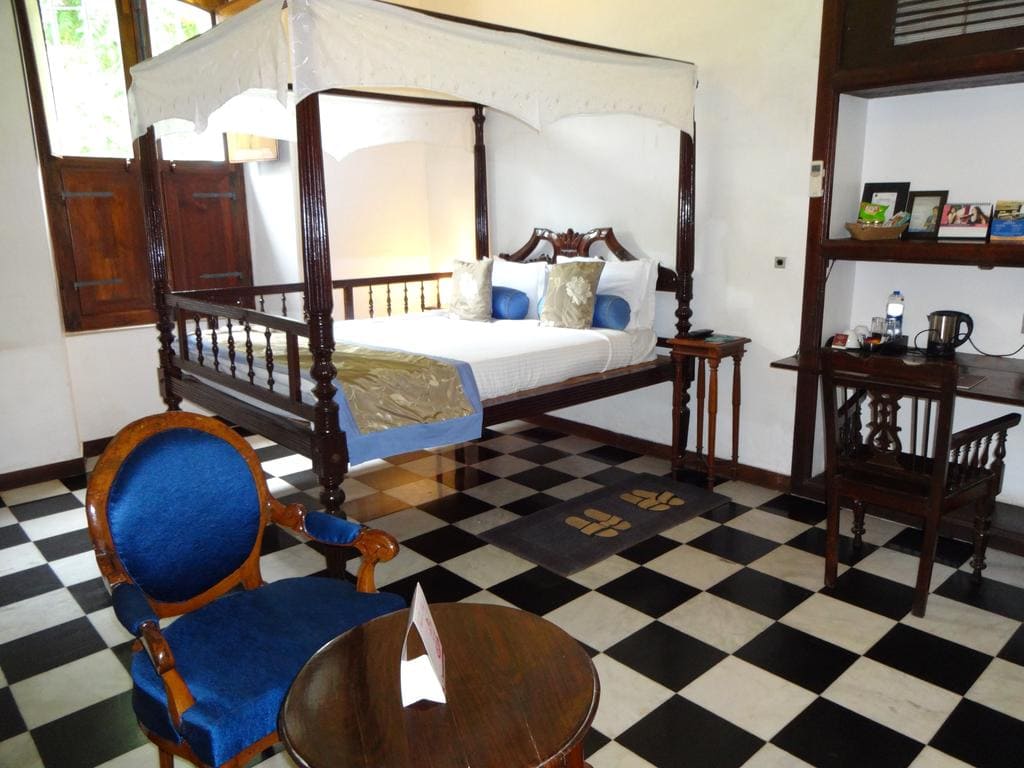Pondicherry is one of the most fascinating states in India. It was a French colony rather than a British one, and it remained as such even after India’s independence and until the 1960s.
As a result, you see a lot of French influence in the food, the architecture and the culture, with the French Licee and several of France’s cultural institutions still having presence in this small state and many people speaking French.
If you have watched the famous Life of Pi, one of the best movies about India, you may remember that the young boy starts the movie with tales of his childhood there and explains how his name, Pi, was not a mathematical reference, but short for piscine, the French for swimming pool, which he remembers from his childhood in Pondi.
Because of its proximity of the capital of the Tamil Nadu State, and the great roads, Pondicherry is one of the best day trips from Chennai. In about 1-2h depending where in Chennai your journey starts, you can arrive in Pondi, as the locals refer to it.
You can also get here on a part of a luxury train in India itinerary. Once you get there, there are a few places to visit in Pondicherry that will make your trip worthy.
Map of Pondicherry
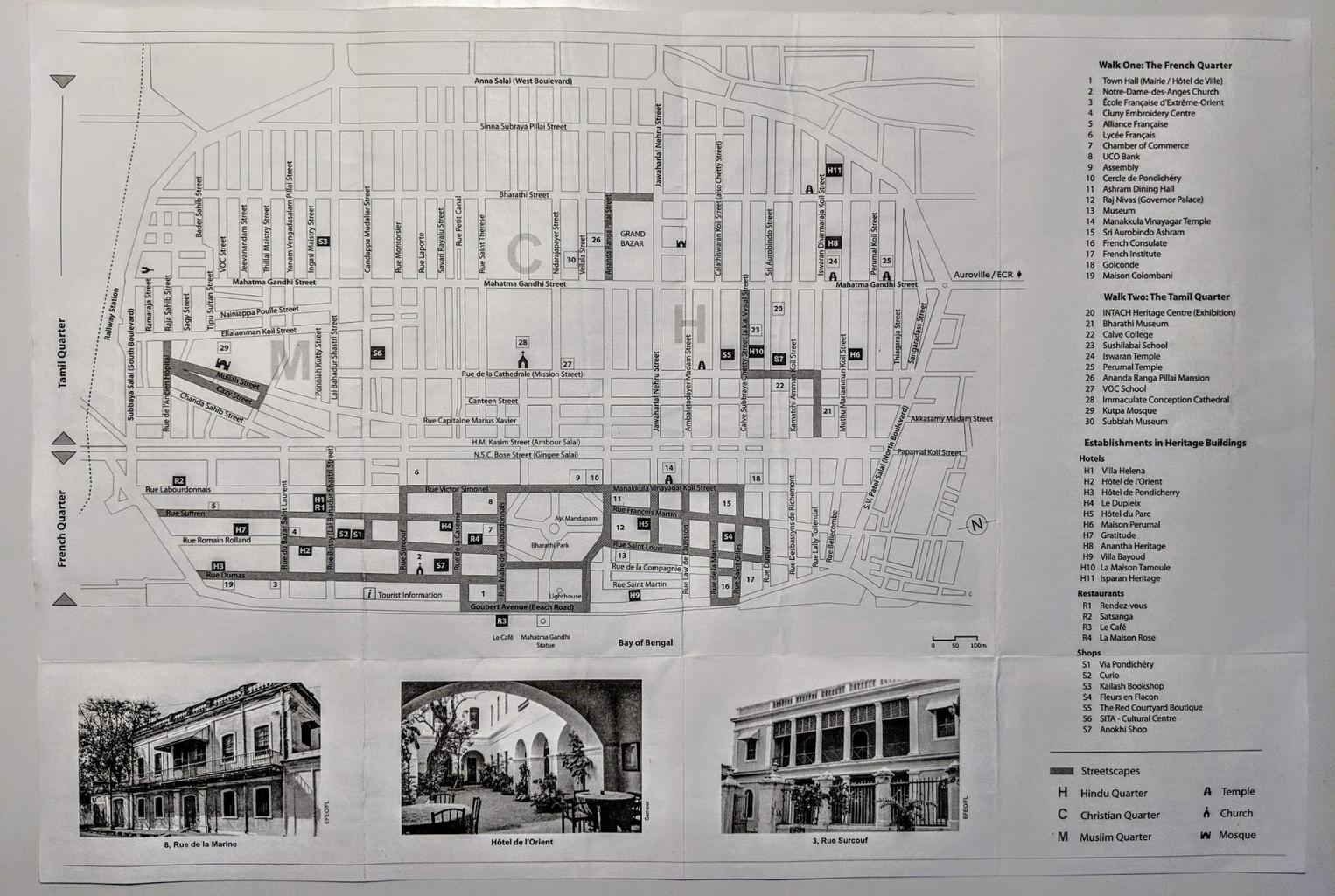
Pondicherry’s old city center is oval shaped and located by the sea. It is split into three main sections: the French Quarter, the Tamil Quarter and the Muslim Quarter.
French influence is mostly concentrated in the small White Town, or French Quarter, which includes a handful of streets of about a kilometer long, parallel to the beach and sea promenade and separated from the Tamil part by the canal.
White Town, although obviously referring to the French settlers, is also the name given to Chennai’s original British Settlement around Fort. St George, and differentiated it from the original Black Town, the area around today’s Georgetown.
On the other side of the canal you will find Black Town, or the Tamil Quarter, a completely different neighbourhood much more similar to several other parts of India. The Muslim Quarter is located at one end of the old city and is much smaller.
The French Quarter of Pondicherry
It takes about a couple of hours to leisurely explore the French Quarter, looking out for the best preserved buildings and the prettiest lanes, and is the best place to start your exploration of the best places to visit in Pondicherry.
There are a few buildings and place worth stopping by in the French Quarter. Start at Hotel de l’Orient, an 18th century mansion that became the French Quarter’s first renovated boutique hotel.
Before this and other properties started to refocus on the tourism potential of its heritage, Pondi was a rather peaceful and sleepy coastal town. But the renewed interest from locals converted some of these crumbling French colonial mansions into hotels, cafes and restaurants.
The owner was the first person to take a leap of faith, but many followed. Today, the most high end of the hotels in Pondicherry, where I stayed at, is the Palais de Mahe which is in fact a new building designed to replicate the historical French mansions.
The French brought with them Catholicism and Pondicherry is one of the few places in India where you can see such a high concentration of Catholic churches.
Next to some of India’s most famous ashrams are two beautiful cathedrals as well as several convents. Ironically, they are both outside the French Quarter. The only church in the French Quarter is the pastel pink Notre Dame Des Angels Church.
The church is one street in from the sea promenade but connected to it through the large Joan of Arc garden which covers the entire block and has some benches to sit and relax. The park was donated to the church on condition that nothing is built to obstruct the priest’s view of the sea. French mass service is still offered daily by the Indian priest making for a very unique expression of Pondi’s multicultural past.
If you carry on you will see one of Pondicherry’s most famous places. This is not just a dining spot with great views but also a historical customs house. It is closer to the water than any other structure in Pondi and its historical function explains why.
Following along the sea promenade you will find the French Soldiers War Memorial which is dedicated to the French Indian soldiers who died in WWI.
A bit further down, standing tall, is the Old Lighthouse of Pondicherry which functioned from 1836 to 1979. It’s tall but abandoned structure can be seen from afar.
In front of the lighthouse is a statue of Gandhi surrounded by granite monoliths and with great sea views. The statue is lit brightly at night with all sorts of colorful twinkling lights giving it a festive feel.
At 4m tall, it is the third largest Gandhi statue in the world. Originally, there was a tunnel underneath but that is now closed as some people perished due to suffocation.
The area around the statue is a popular spot for locals to gather in the evenings and on the weekends so it can get pretty crowded. The best way to enjoy the entire sea view is with a drink from the rooftop restaurant-bar of Promenade Hotel.
Inland from the sea promenade there are a few other places to visit. First is the Ecole Francaice d’Extreme-Orient, which is a research institution focused on the study of Indology and has a beautiful courtyard. It also has a great collection of old photos of Pondicherry that are quite interesting to look at.
The Alliance Francaise is one of the first ones constructed outside of France and opened in 1889. The French Licee is the oldest French school in Asia and opened in 1826. It has changed names several times but has remained a French teaching institution.
Look out also for the Old Court Building which is now under renovation but was a functioning institution in various roles from 1766 until 2008.
Perhaps one of the most legendary of the places to visit in Pondicherry is Aya Mandapam and the park around it. Built inside a monumental porch referred to as Mandapam, this is the spot where the fountain that supplied water to the city was. This is incredibly lit at night with fluorescent bright lights.
Continue your walking tour of the french Quarter at the Puducherry Museum which contains information about the city and its trading past as well as links to the dynasties that inhabited the area through the years.
The walking tour ends at the Arulmigu Manakula Vinayagar Temple which makes for a good transition to the Tamil Quarter. This temple is an incredibly intricate building which does not look much from the outside but is an explosion of color inside.
The temple name translates as the temple near the sand pond and is renowned for its elephant God which gives blessings to the devotees everyday. Queues here are very long when pooja (prayer) times are on, and everything is pretty well organised. You buy your ticket for the queue from the kiosk and then stand in line for your turn.
The Tamil Quarter of Pondicherry
After exploring the French Quarter, if you are staying in Pondicherry a bit longer like me, you should make sure to also visit the Tamil Quarter which tells of the other half of the city’s story. The Tamil quarter is about 3-4 times bigger than its French counterpart but still walkable and explorable on foot.
Historically the Black Quarter, this was the area where the locals used to live and its design and architecture differs greatly from the French side. Gone are the colonial mansions, the pastel yellow and pink facades and the pink bougainvilleas.
There are no Parisian lamp posts here and the streets are more crowded, more chaotic and noisier. The honking of rickshaws, scooters and cars silences the singing of birds, but this does not make the Tamil Quarter less interesting, it only makes it more intense.
You can find a few of the best things to do and see in Pondicherry in here, you just need to look past the dust, the occasional cow and the broken sidewalks.
Start at practically one end of the Tamil Quarter at INTACH, the NGO that has done, and continues to do, most to preserve Pondicherry’s heritage by lobbying, teaching, educating and working on research projects to conserve its past in the best way possible.
The center is open to anyone and is a testament to the change the city has gone through with several photographs documenting the before and after of all the major renovation projects in the city. The staff are also at hand for any questions and they can also lead walking tours.
We hired one of their senior staff members, an Urban Planner by profession, who walked us through the French Quarter and told us about all the main landmarks.
After exploring the center itself, make sure to spend some time admiring the facades of the rest of the buildings in the street. Calve Subraya Street also known as Vysial Street is made of historical Tamil houses.
Here you can see the ground floors, pillared and with covered verandahs and eats for visitors, similar to the colonial shophouses in Singapore or Malacca, and the first floor were some French influence still remains in the windows and the decorations. Inside, like at INTACH, there are courtyards that made me think of the Roman houses of antiquity.
Despite the Tamil Quarter being the center of Hinduism in the city, one of the most important churches in Pondi is here. The Immaculate Conception Cathedral is another impressive Catholic building, this time, of Portuguese design.
Painted in white and yellow, and fronted by a golden statue of the Virgin, this church is reminiscent of the Portuguese churches further east in Macau.
My favorite place in the Tamil Quarter is the Grand Bazaar also known Goubert Market. Enter this yellow and green plastic roof maze and find colorful vegetables and fruits, beautiful flower garlands and rose buds. This is a photographer’s paradise and the best expression of India.
When you are done exploring, don’t miss the chance to have lunch at Maison Perumal, a heritage building in the Tamil Quarter and the home of one of the best hotels in Pondicherry. It even has a nicer verandah cafe for a drink while people watching.
The Muslim Quarter of Pondicherry
The Muslim Quarter in Pondicherry is the smallest and appears dwarfed next to the Tamil or French Quarters. It is also remarkably quiet in the country of car honking.
The streets are decidedly Islamic looking with crescent shapes, a choice of green and windows with grids protecting the women of the house.
However, the most remarkable place to see in Pondicherry’s Muslim Quarter is the Sacred Heart Basilica, a huge red and white basilica that is quite impressive in size and grandeur. Do go in for a look at some remarkable design and intricate interiors.
After that, walk a few more streets down and observe the streetscapes that give name to the quarter between Cazy and Mullah Streets. Here you will notice the Muslim Quarter elements in the grid windows and the extra privacy.
On Mullah stop at Kutpa Mosque, sandwiched between the buildings around it.
Auroville
Auroville is an experimental community about half an hour outside Pondicherry towards Chennai, and it is one of the most fascinating, unique and strange things to do in Pondicherry.
Your head is probably boiling with questions about what an experimental community is and what is there to see or do. So let’s see, one by one.
What is Auroville?
Auroville is a community and aims to be a future city for up to 50,000 people from all parts of the world. It opened in 1968 and has been growing and expanding since. It is an experiment because it has not ended yet and there are no express results, but the idea is to learn from it.
The community has the backing of the Government of India and UNESCO and was founded by The Mother, a French woman of Turkish and Egyptian parents who had a strong interest in spirituality since a young age.
She traveled to Pondicherry to meet who would become her mentor, Sri Aurobindo, with whom she created the Aurobindo Ashram in Pondi in 1926, and when he died, she decided to create a community based around their teachings.
Sri Aurobindo was a freedom fighter pre-Gandhi times, who then left politics and moved into yoga and spirituality after being released from imprisonment.
What are Auroville’s principles
The community’s charter, as defined by The Mother, has four points, as mentioned on the community’s website:
- Auroville belongs to nobody in particular. Auroville belongs to humanity as a whole. But, to live in Auroville, one must be a willing servitor of the divine consciousness.
- Auroville will be the place of an unending education, of constant progress, and a youth that never ages.
- Auroville wants to be the bridge between the past and the future. Taking advantage of all discoveries from without and from within, Auroville will boldly spring towards future realisations.
- Auroville will be a site of material and spiritual researches for a living embodiment of an actual human unity.
The thinking behind Auroville is focused on the Divine Consciousness.
What can you see at Auroville?
Any visitor to Auroville has to start the visit with a short video about the concept which narrates what it is all about. You can only then walk the 1km shaded path to the Matrimandir, the community’s center of peace, after you have watched this video.
The Matrimandir has an urn in the middle with soil from all 124 countries who had representatives present at the time of inauguration and can only be approached by members of the community for the purpose of meditation. Visitors can only reach a viewing platform a few meters away from where you can take photos, but you are still pretty far away from it.
The city has set aside areas for residences, for green industries, for cultural and educational expression, and an international pavilion area devoted to all the countries in the world. What has already been collected for the international zone is on display in the center of the visitor’s part.
After seeing the Matrimandir, you can also explore the rest of the area including the few cafes and restaurants and the shops selling organic cosmetics, incense, clothing, handmade pottery, etc. As well as the international section where the materials already put together for the various pavilions are displayed.
The restaurant makes homemade food with ingredients grown at Auroville and has a good selection of vegan and vegetarian options too. There are a few ice cream shops selling creamy gelato and open air cafes with great coffee.
It is best to stop there on your way down from Chennai to Pondi because it makes for a great lunch break spot. The community also offers the option to volunteer or stay longer to learn more. More info here.
Where to stay in Pondicherry
Pondicherry has only a few hotels and the majority are tiny boutique hotels with half a dozen rooms maximum set in renovated heritage mansions. My recommendation would be to stay in the French Quarter which is more peaceful, safer, cleaner and more scenic than the rest of Pondi. It also allows you to go out for dinner and to explore everything without the need for a car.
This is my selection of the best places to stay in Pondicherry.
Palais de Mahe
This is where I stayed and without a doubt, the most premium accommodation in town, even our guide confirmed it. Part of the CGH Hotels group with other properties around the south of India, this is a boutique hotel set in a modern house designed to look like the old French mansions. Think yellow and white stucco facade, internal courtyard with a pool, vintage furniture, a colonial inspired bar, pretty floor tiles and a nice rooftop restaurant for breakfast or dinner.
Book now on Booking.com | Agoda
Maison Perumal
Part of the CGH Hotel group as well, Maison Perumal is in the Tamil Quarter very near INTACH and has one of the nicest restaurants in the city so a great spot for lunch even if you are not staying there.
This historical mansion has all the elements of a Tamil house including the pretty internal courtyard, the dark wooden beams and the yellow paint. This is perhaps the real colonial version of Palais de Mahe.
Book now on Booking.com | Agoda
The Promenade
This hotel has an amazing location right by the promenade and the sea and a great rooftop with the best views in town. The hotel is a bit less charming that Palais de Mahe but what it lacks on the character front it makes up with location and views. It is part of India’s Hidesign group.
Book now on Booking.com | Agoda
Villa Shanti
Another great restaurant to come for dinner at even if not staying there, Villa Shanti is a 19th century mansion with a handful of rooms, high ceilings, white washed walls and a modern vintage touch, if that is possible.
Book now on Booking.com | Agoda
Le Dupleix
Named after the famous French Governor in Pondicherry, this is a small boutique hotel in a colonial mansion from the same Hidesign group. Le Dupleix combines modern facilities with a vintage look and historical surroundings.
Book now on Booking.com | Agoda
- Check if you need a visa, get help processing it at iVisa.
- Never ever leave without travel insurance. Get affordable coverage from World Nomads or long term insurance from Safety Wing.
- I find all of my flights on KAYAK. Check their Deals section too.
- Search for all your transportation between destinations on the trusted travel booking platform Bookaway.
- I book all my day trips and tours via GetYourGuide, they are the best and their tours are refundable up to 24h in advance.
- Get USD35 off your first booking with Airbnb.
- Compare hotels EVERYWHERE at HotelsCombined and book with Booking.com.
- Compare car rental prices at Rentalcars.com

